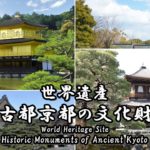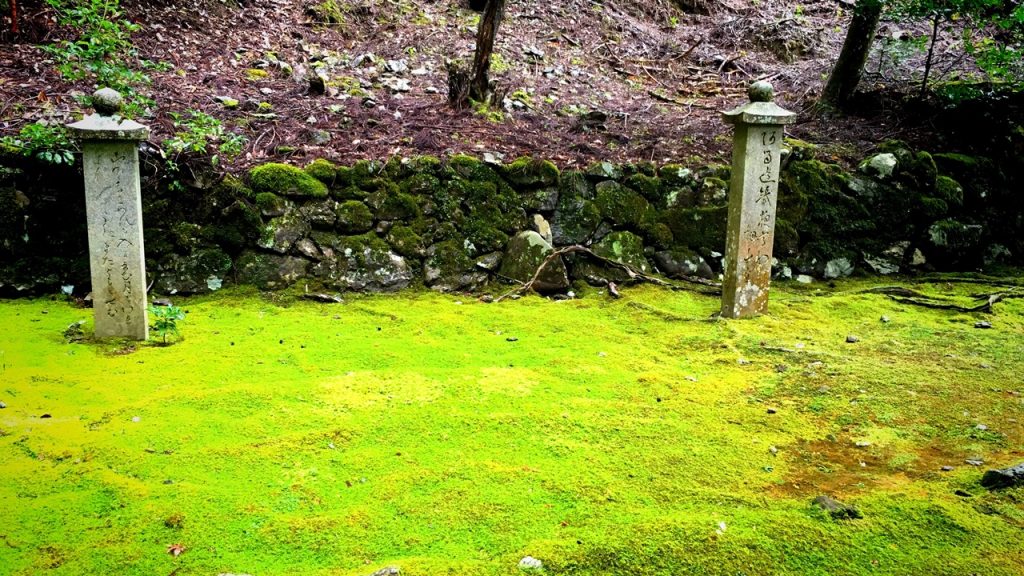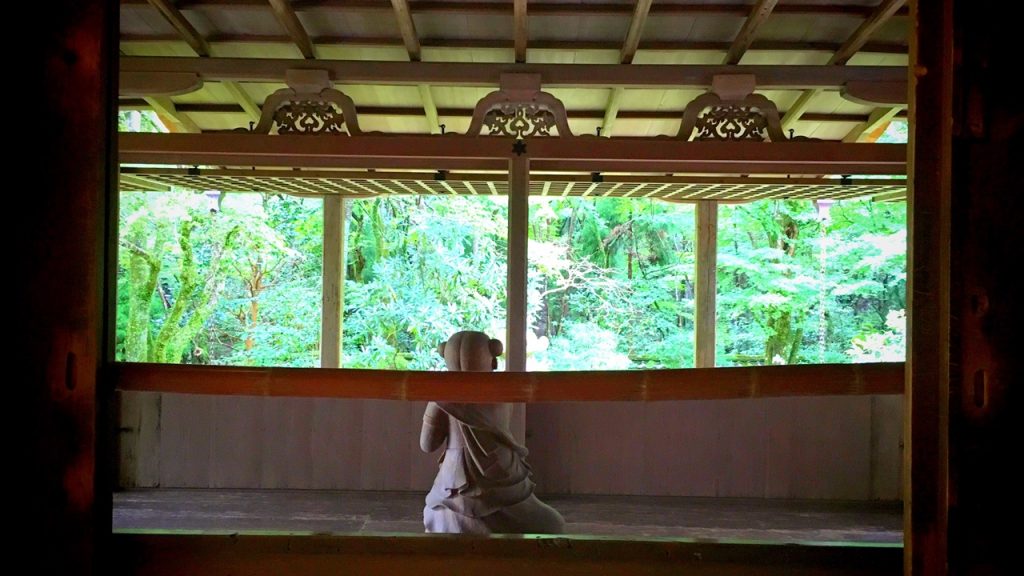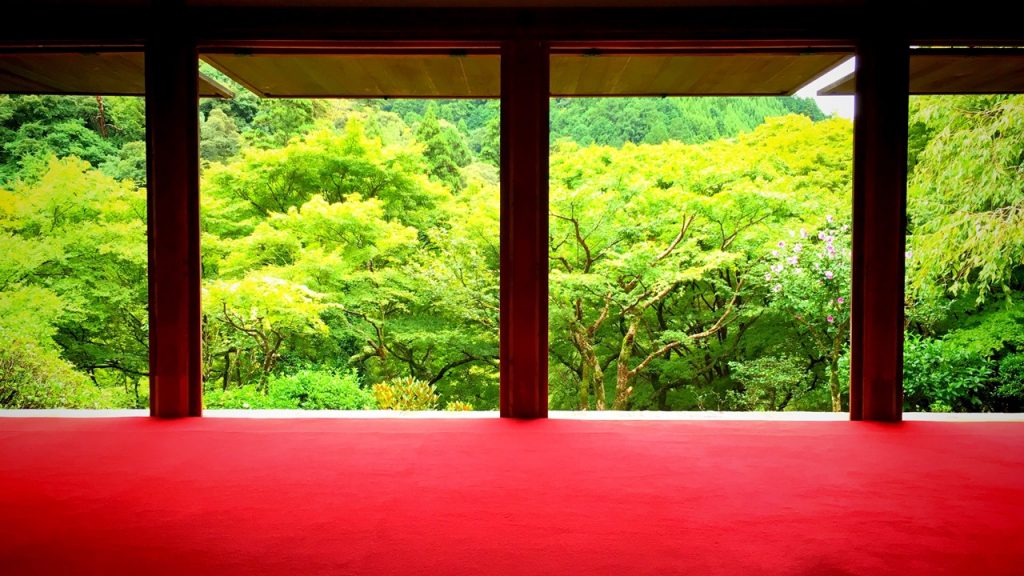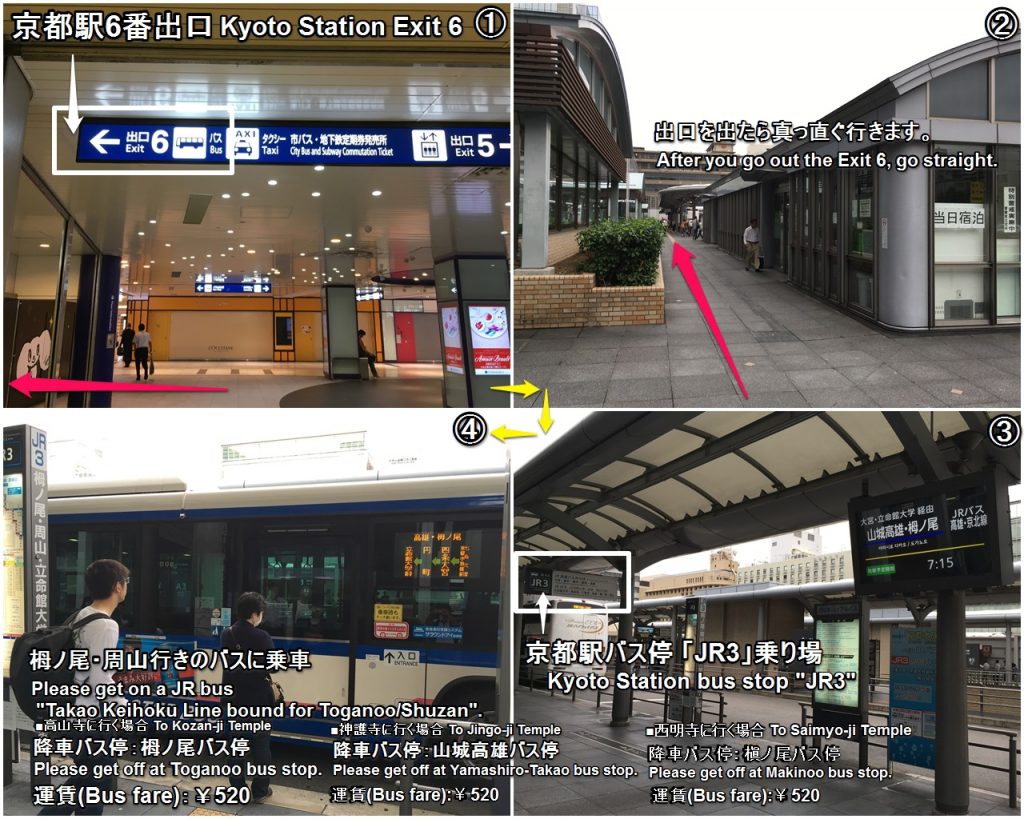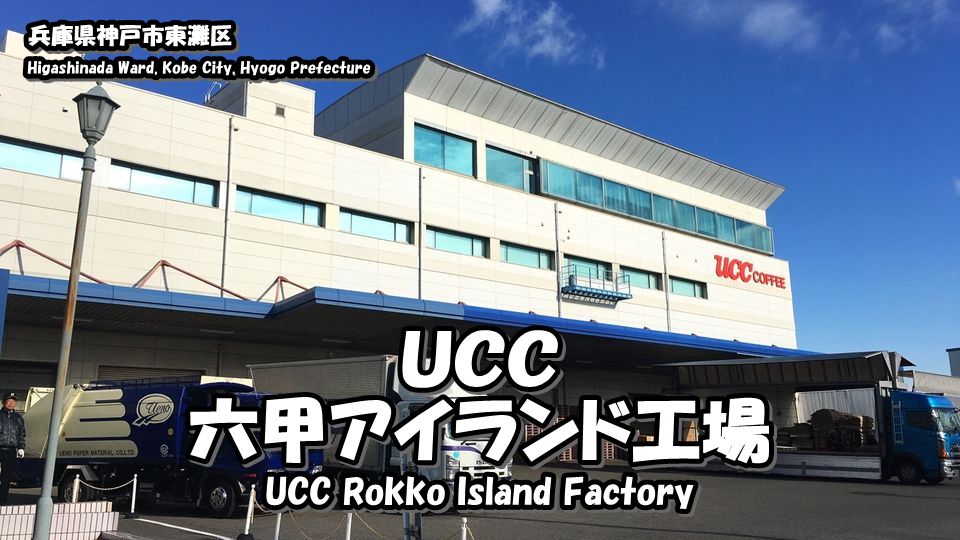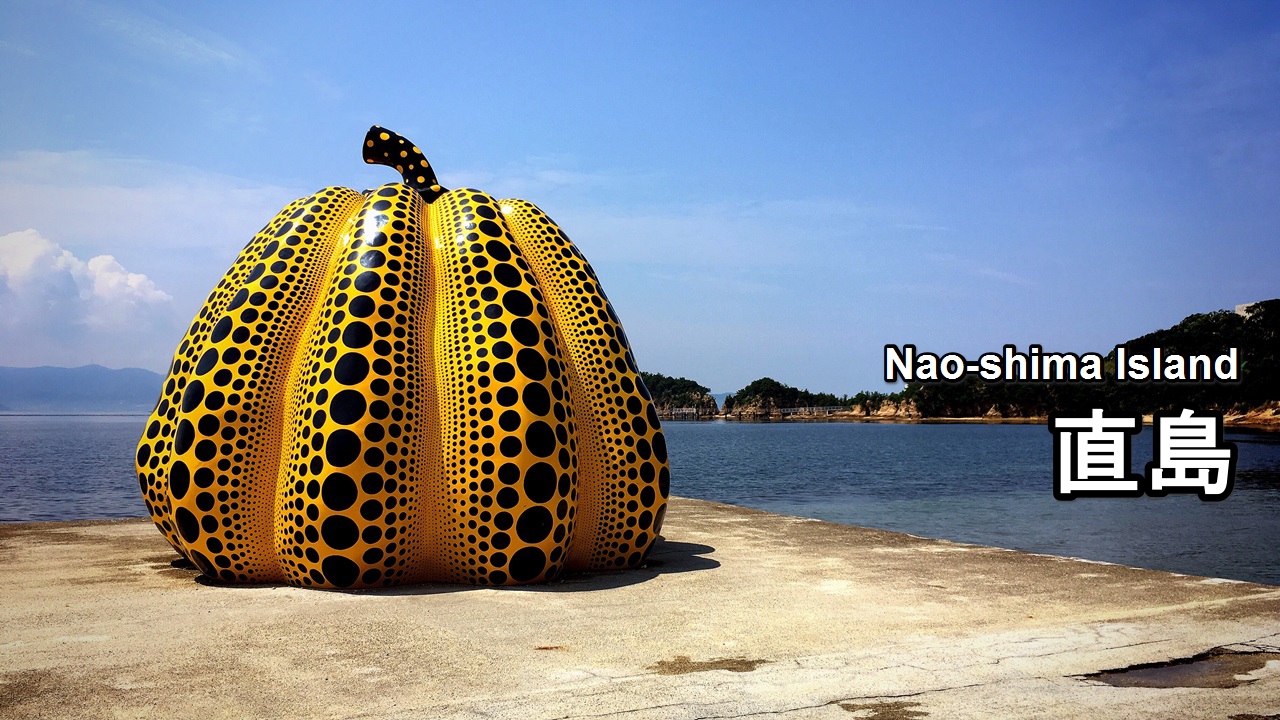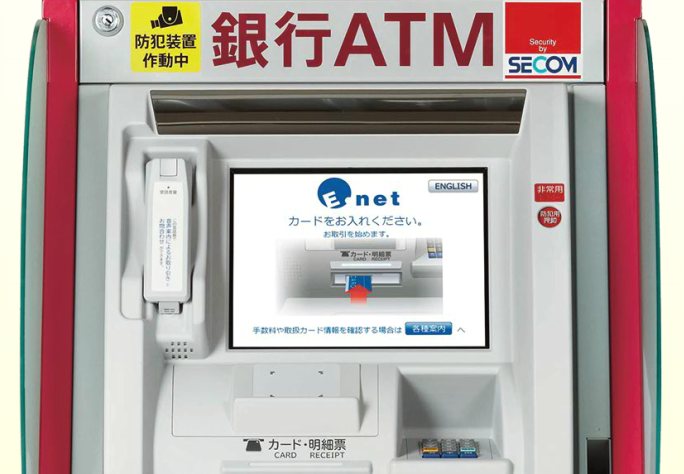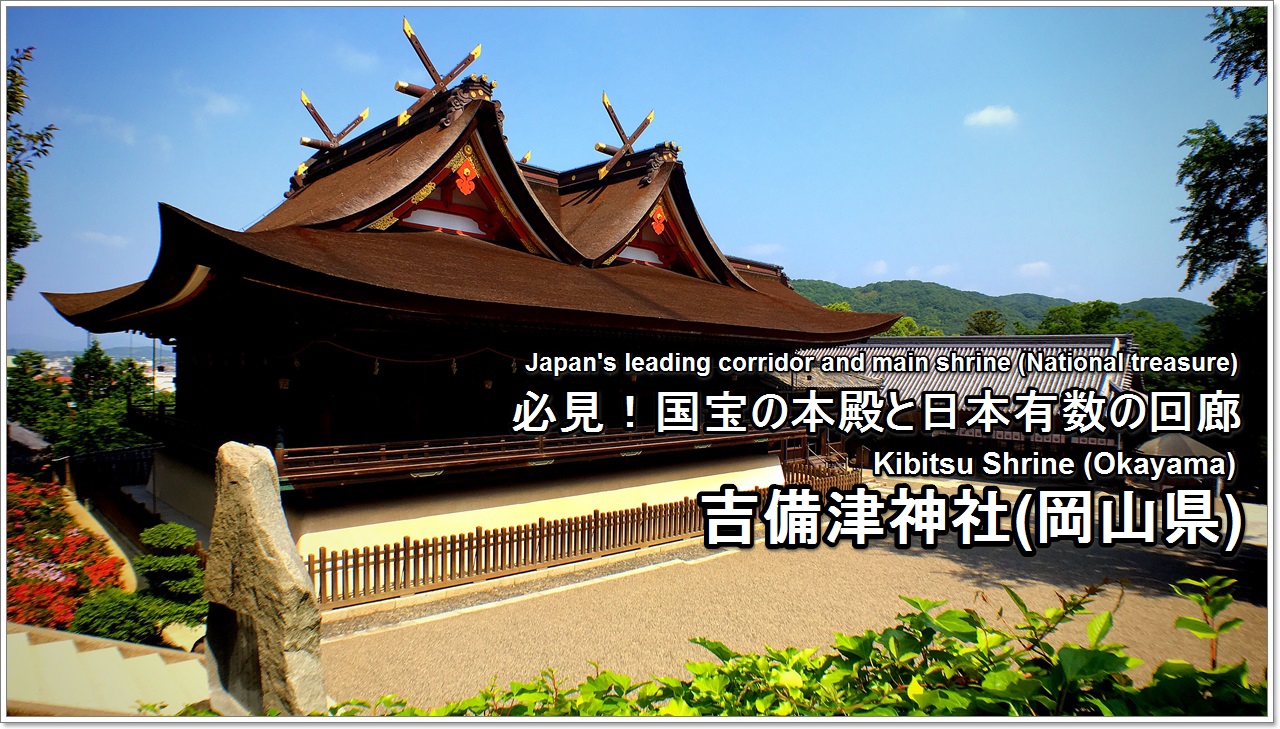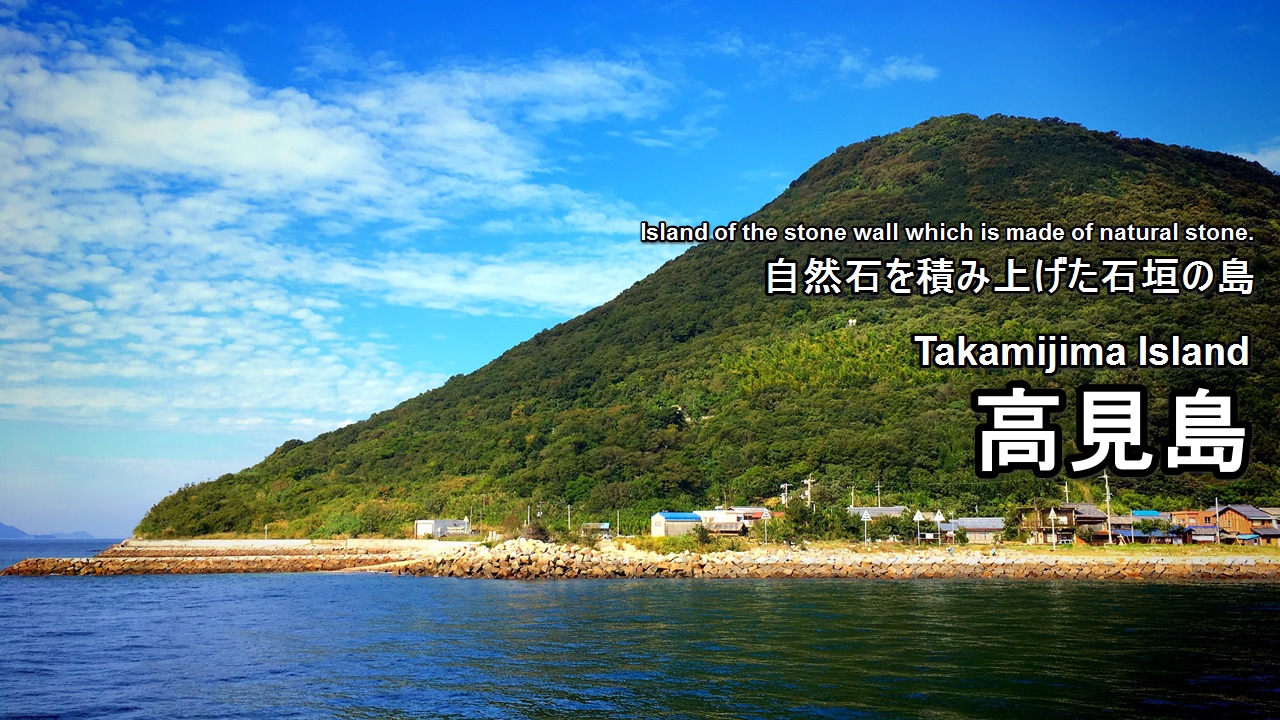Japanese manga & anime are a culture that Japan boasts to the world.
Then, what is the Japanese oldest manga?
The answer is “鳥獣人物戯画:Choju Jinbutsu Giga (caricatures of frolicking birds, animals and humans)”.
This is the picture scroll which was drawn with a sumi in the early stage of thirteenth century in the Kamakura era from the late stage of twelfth century in the Heian era.
Let’s go to watch this Japanese oldest manga!!
So, this article introduces Kosan-ji Temple where “鳥獣人物戯画:Choju Jinbutsu Giga” is owned.
In addition, Kosan-ji Temple has a lot of highlight!
Because this temple stands in the middle of the mountains of Kyoto, a season of the fresh green and a rainy day are especially beautiful.
(This temple is also beautiful at the time of colored leaves, but is crowded very much.)
Oh…, the weather forecast of the day to go to Kyoto for a trip is “rain”…
In such a case, please get up early, and visit this temple!!
Also, this temple has been designated as the World Heritage List as part of the cultural assets of ancient capital of Kyoto.
Along with Saimyo-ji Temple and Jingo-ji Temple, this temple is one of the “三尾の名刹(Three famous temple in northwest of Kyoto)”.
These temples are located within walking distance from each temples.
・Blog article of Jingo-ji Temple
・Blog article of Saimyo-ji Temple
Contents:
- About World Heritage ‘Historic Monuments of Ancient Kyoto’
- About Kosan-ji Temple
- Highlights of Kosan-ji Temple (free area)
- The Sekisui-in (National Treasure) and the Choju Jinbutsu Giga (pay area)
- Goshuin of Kosan-ji Temple
- How to get to Kosan-ji Temple
1.About World Heritage ‘Historic Monuments of Ancient Kyoto’
17 places of temples and shrines of Kyoto are designated in ‘Historic Monuments of Ancient Kyoto’.
↓Details of the “Historic Monuments of Ancient Kyoto” is here.↓
Kosan-ji Temple has been designated as the World Heritage List as part of the cultural assets of ancient capital of Kyoto.
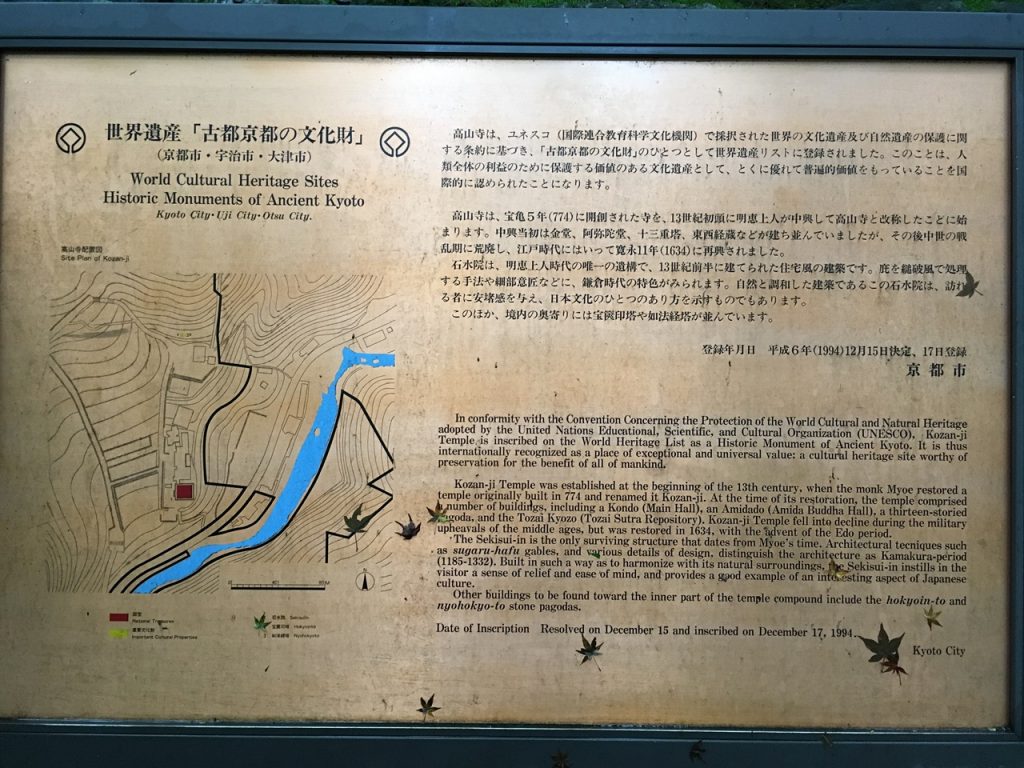
2.About Kosan-ji Temple
Kōzan-ji (高山寺), officially Toganōsan Kōsan-ji (栂尾山高山寺), is a Buddhist temple of the Omuro sect of Shingon Buddhism in Umegahata Toganōchō, Ukyō Ward, Kyoto, Japan. Kōzan-ji is also known as Kōsan-ji and Toganō-dera. The temple was founded by the Shingon scholar and monk Myōe (1173 – 1232) and is renowned for its numerous national treasures and important cultural properties.[1] The Chōjū-jinbutsu-giga, a group of ink paintings from the 12th and 13th centuries, are among the most important treasures of Kōzan-ji.[2] The temple celebrates Biyakkōshin, Zenmyōshin and Kasuga Myōjin, as well as the temple’s tutelary Shintō deity. In 1994, it was registered as part of the UNESCO World Heritage Site “Historic Monuments of Ancient Kyoto“.[2]
引用(citation):https://en.wikipedia.org/wiki/K%C5%8Dzan-ji
Open:8:30~17:00
Admission Fee:800 yen(Adults),500 yen(Junior high school / high school student),400 yen(Elementary school student)
Adress:8, Umegahata Toganocho, Ukyo-ku Kyoto-shi, Kyoto, 616-8295, Japan
Phone Number:+81-75-861-4204
The Kosan-ji Temple is a Chokugan-ji Temple (temple built at the order of the emperor) where the Imperial scroll of ‘日出光 照高山之寺’ was granted it as an Imperial gift from Retired Emperor Gotoba.
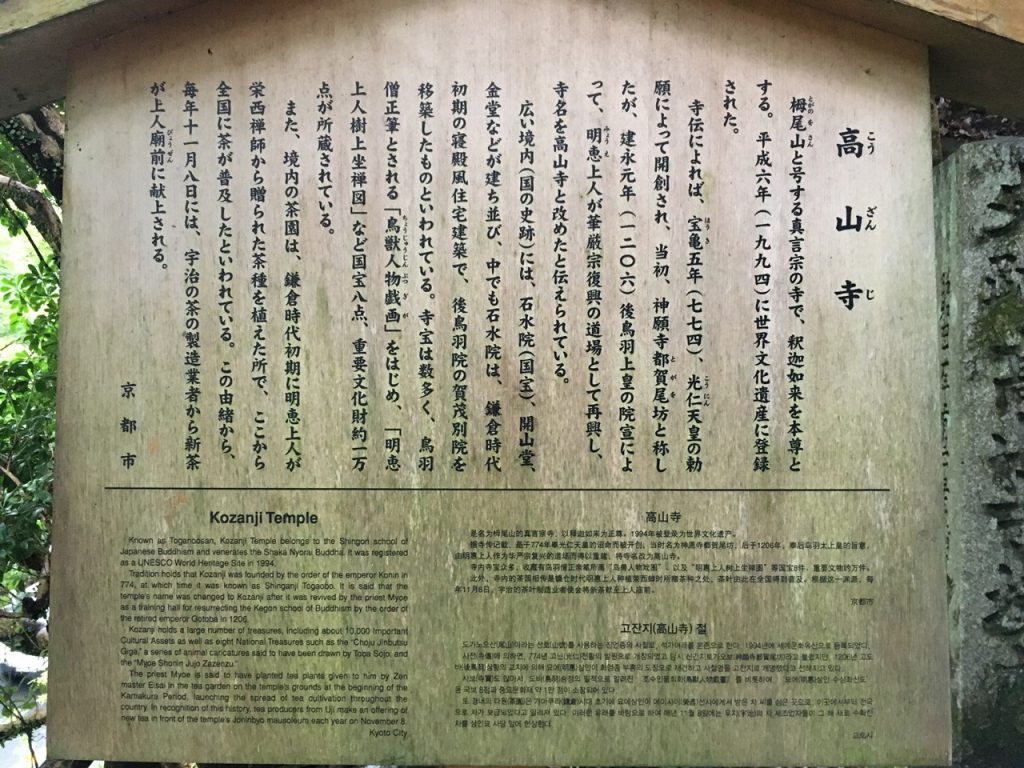
This is the precincts guide map of Kosan-ji Temple.
The precincts of Kosan-ji Temple are very large.
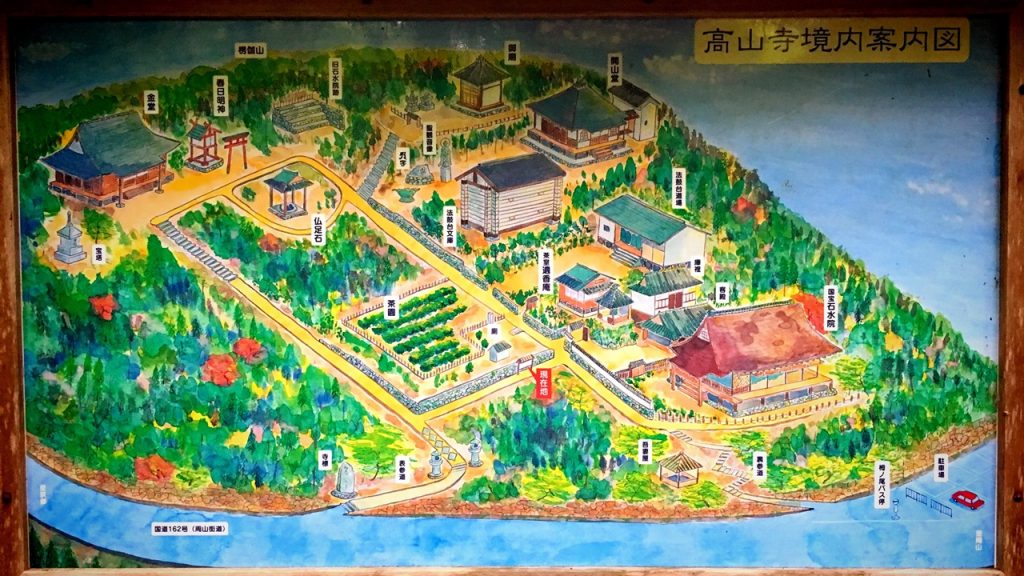
The precincts of the temple stretch from the foot to the middle of the mountain.
Please be careful about a hornet or insects during the particularly summer period. (> <)b
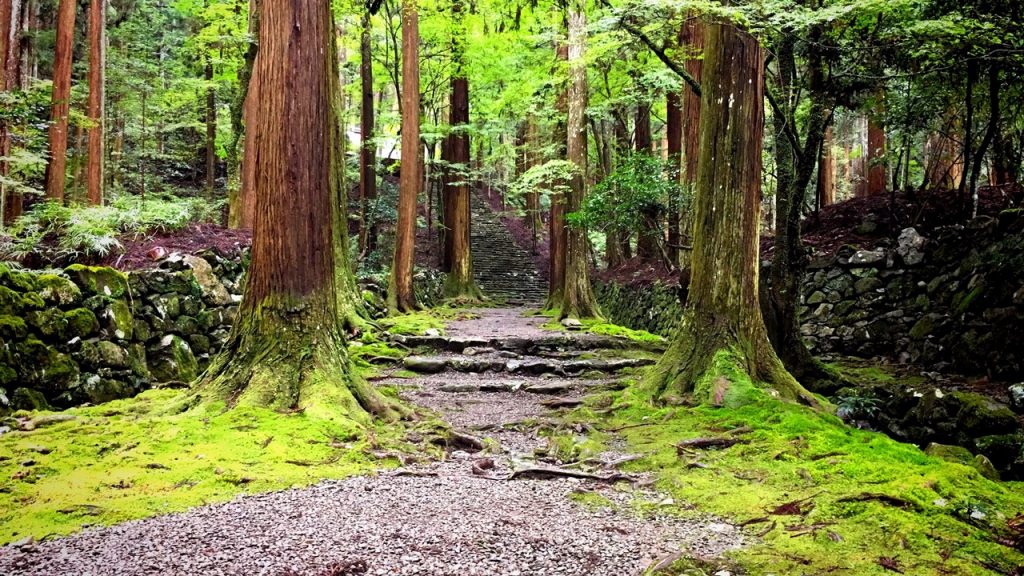
3.Highlights of the Kosan-ji Temple (free area)
As I said, because this temple is in the recesses of the mountains, as for the season of the fresh green and colored leaves, scenery is particularly beautiful.
In addition, because this temple is inconveniently situated, there are fewer tourists than other world heritages of Kyoto in this temple.
Therefore, this temple is vacant very much in early morning on weekdays.
(However, this situation is excluded at the time of colored leaves.)
Please get on the following buses when you want to go to this temple early in the morning.
■JR bus which departs from Kyoto Station at 7:15.
(You arrive at the destination at 8:06 when you get on this bus.)
*The opening hour of the pay area of this temple is half past 8. Let’s visit the free area until opening hour of the pay area.
I went to this temple in the morning of the rainy day of September on weekdays.
I visited to this temple from 8:00 to 9:30, but the tourist was only me on this day, haha.
Let’s go to Kosan-ji Temple in the morning of the rainy day on weekdays.
This is the sub approach to a temple of Kosan-ji Temple.
When we go from the bus stop, we go along this approach to a temple.
(The main approach to a shrine is in the other side.)
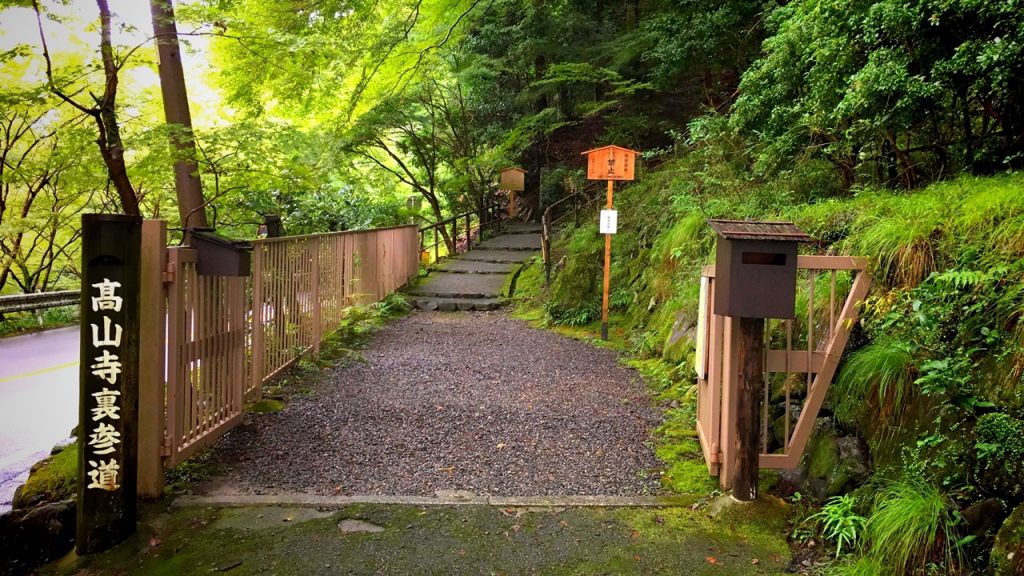
There is a rest area in the middle of the sub approach to a temple.
A building in the center is “吾妻屋(Azuma-ya)“.

This is a stone wall surrounding “Sekisui-In(石水院)” which is the national treasure.
It is mossed very much…!

Because it was a good chance, I also went to the main approach to a temple.
This is a monument in the entrances of the main approach to a temple.。
The word which is called “栂尾山(Toganosan) 高山寺(Kosan-ji)” is engraved into this monument.
(The mountain name of Kosan-ji Temple is “栂尾山(Toganosan)”.)
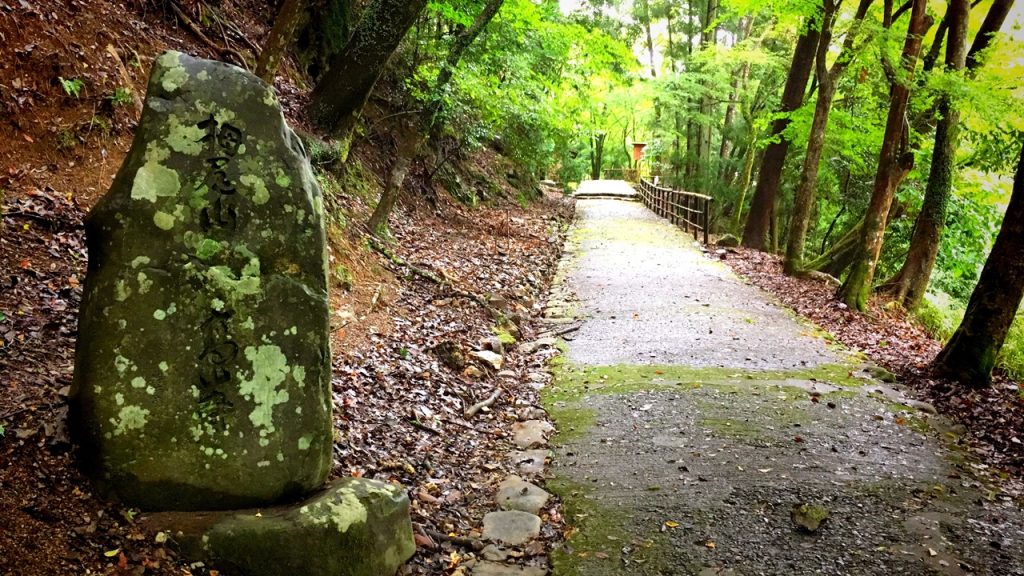
This main approach to a temple is the official entrance of this temple.
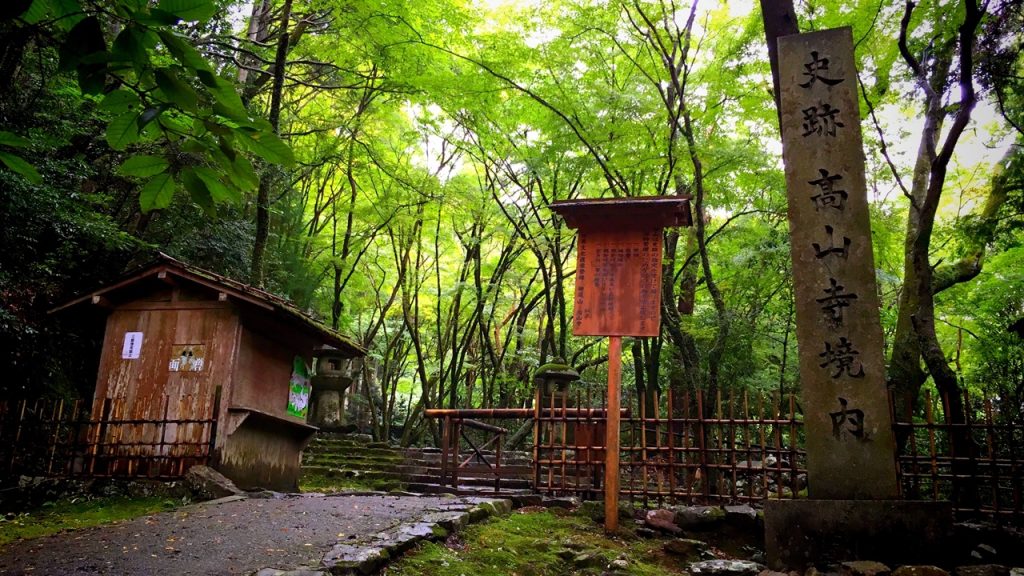
In old days, an excellent Deva gate had been built in this place.
However, unfortunately the gate disappeared by a fire in 1881.

The haiku that Shuoshi Mizuhara who is a haiku poet of the Showa era wrote is engraved into this monument.
“ひぐらしや ここにいませし 茶の聖(ひじり)”

There is the Kon-do Hall(金堂) which is the important cultural property of the country when we go to the end of the main approach to a temple.
Shakanyorai (釈迦如来) that is the principal idol of this temple is worshiped in this building.
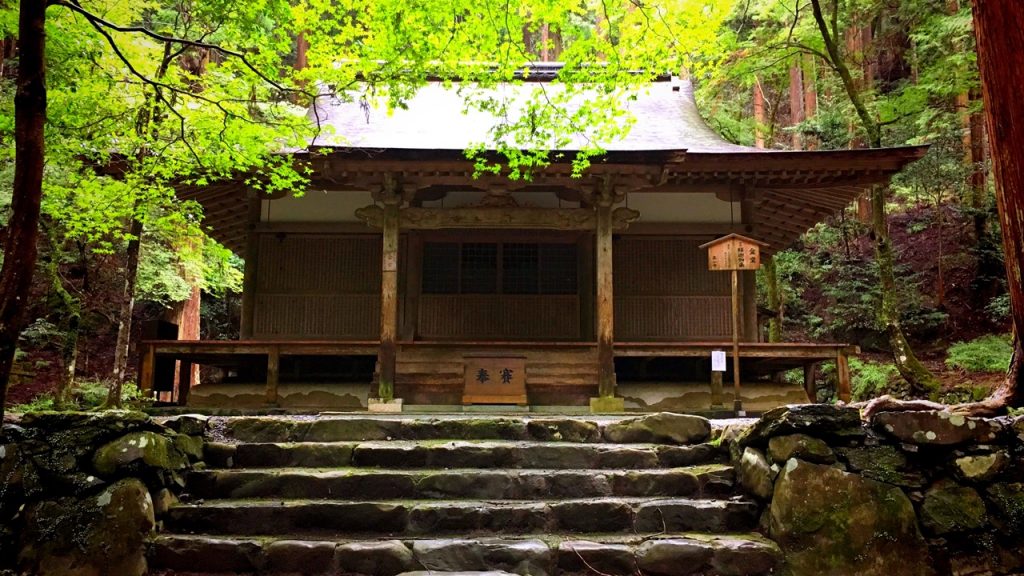
This building relocated a building of Ninna-ji Temple in 1634 and rebuilt it in this place.
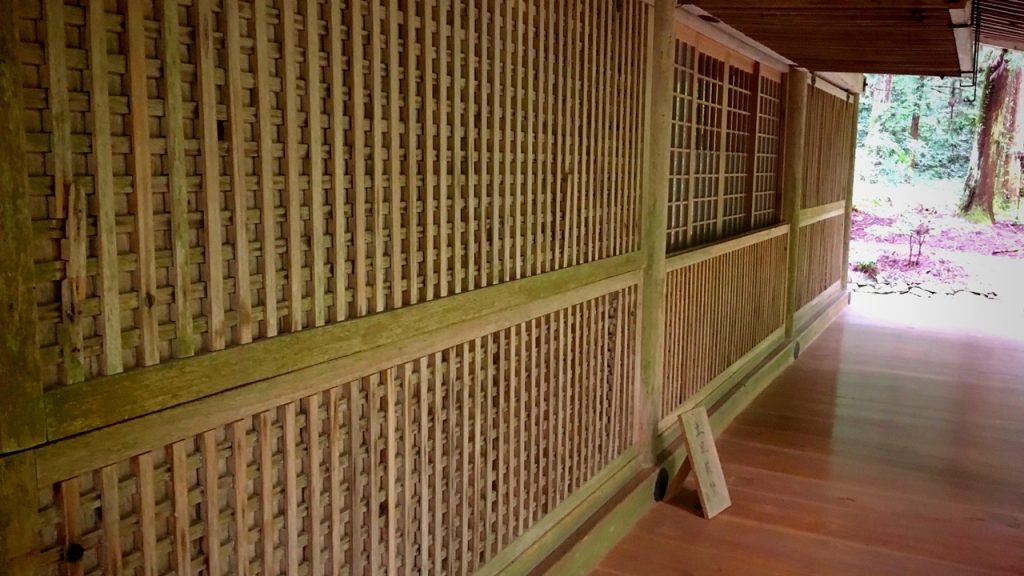
This is a Buddhist pagoda in the backside of Kon-do Hall(金堂).

This is the Kasuga Myojin shrine(春日明神) that is the local deity of Kosan-ji Temple.

There are the ruins where there was the 石水院(Sekisui-in) in old days in the depths of the precincts.
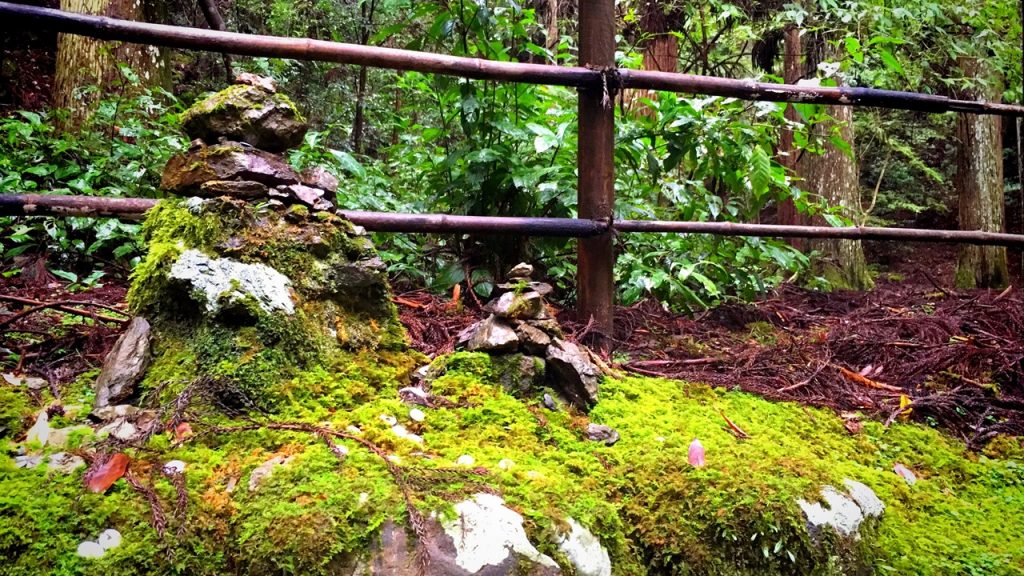
The word which is called “仏足石参詣道(a walkway to the Buddha’s footprint stone)” is engraved into this monument.
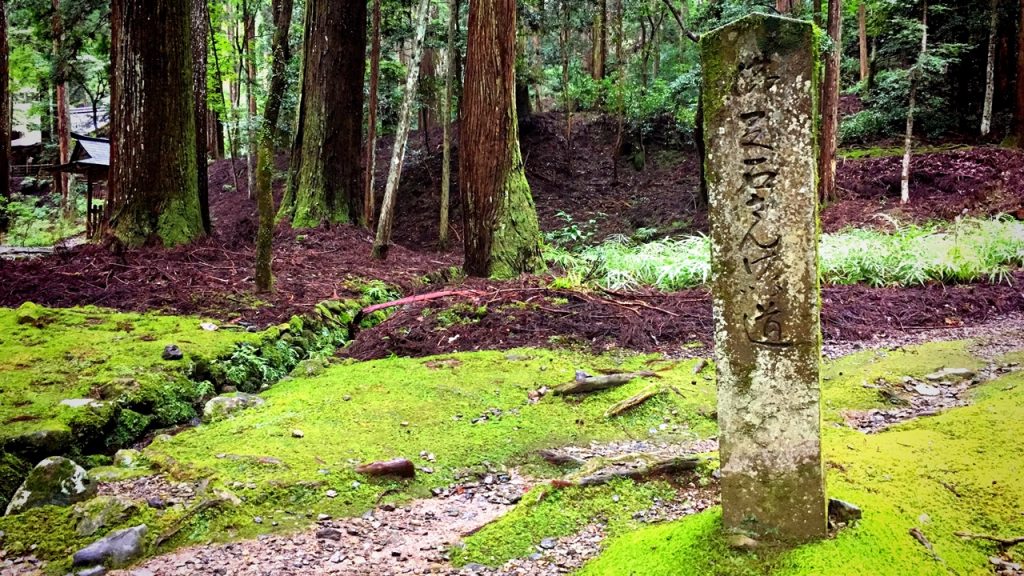
This is a small shrine enshrining “Buddha’s footprint stone(仏足石)”.
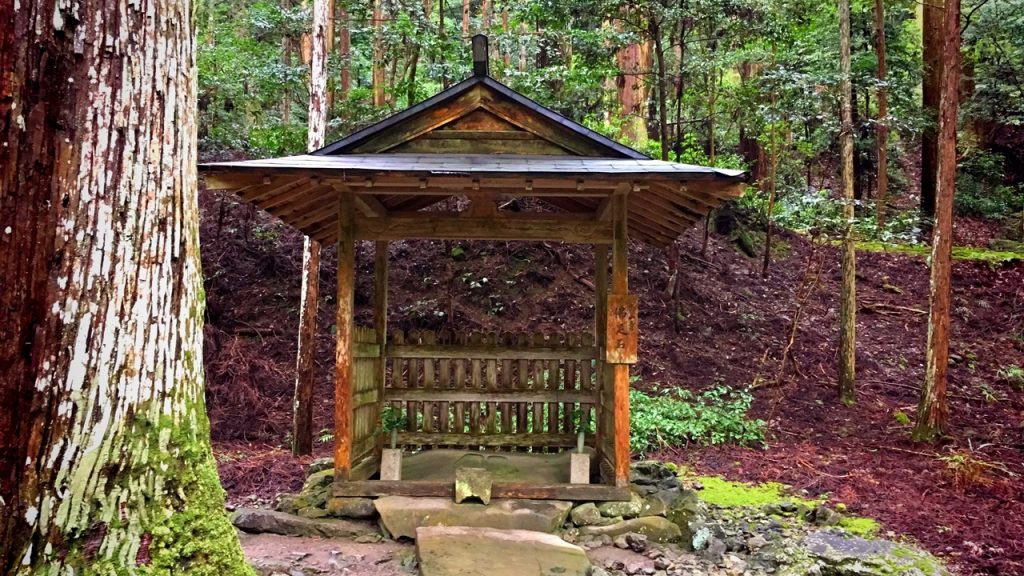
“Buddha’s footprint stone(仏足石)” is the stone that a footprint of Buddha is carved with.
A double ring is carved in the center of the foot when we watch this stone well.
This ring which is called “Sokugenirinso(足下二輪相)” is one of the physical characteristics of Buddha.

This is the Gobyo(御廟).
This is a grave of Myoe-shonin(明恵上人) who is the initiator of Kosan-ji Temple.
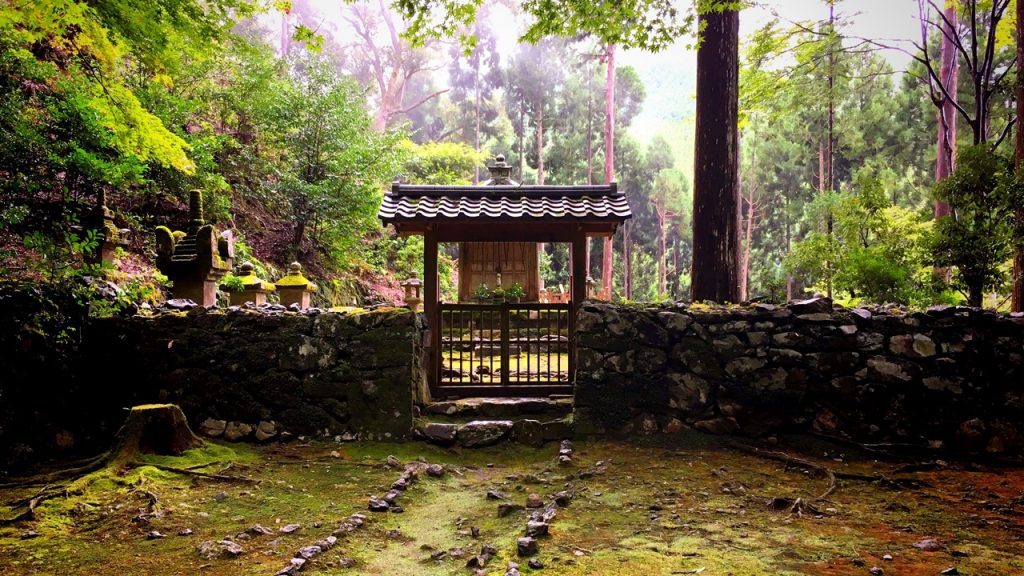
This is the standing statue of Sho Kannon(聖観音像).
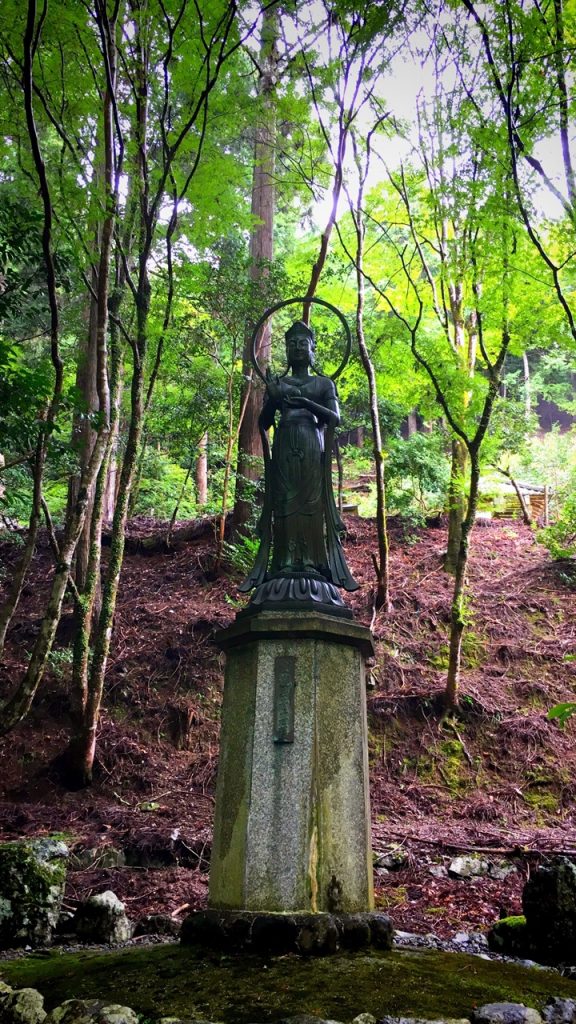
This Kannon is also called “Kannon of the great mercy”.
As the name suggests, this Kannon looks very gentle.
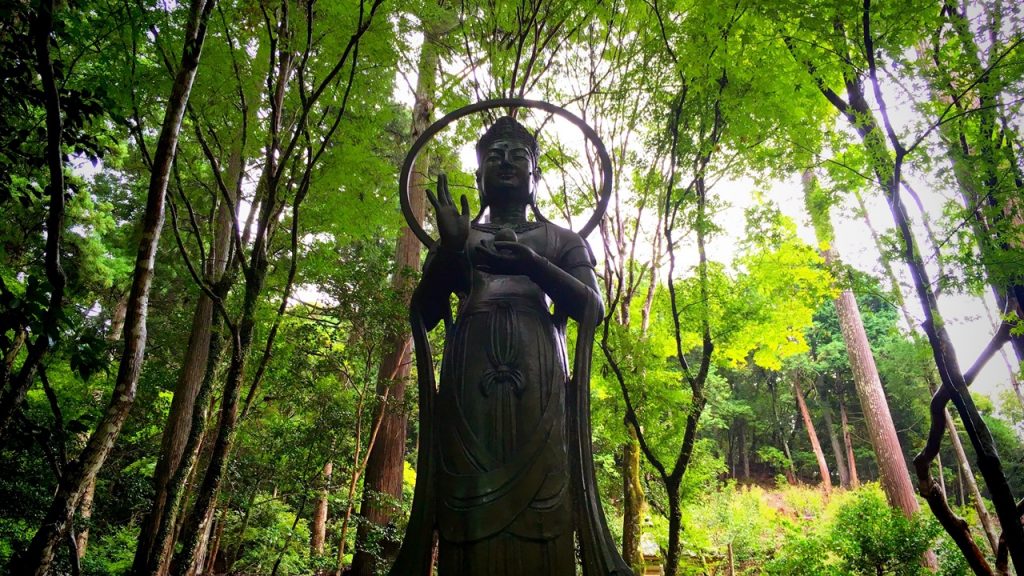
This is the monument where Sanskrit characters were engraved.
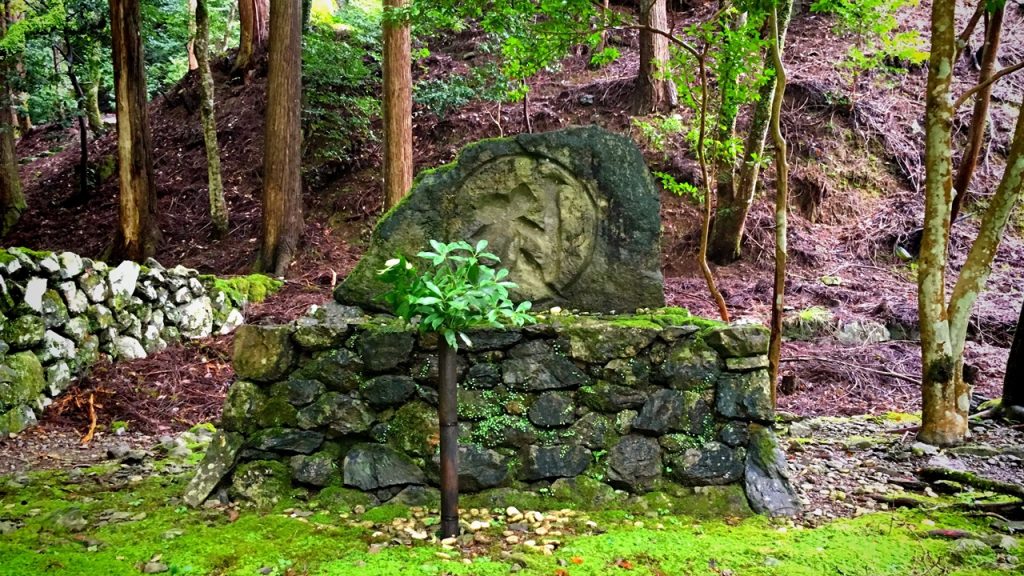
This is the “Kaisan-do Hall(開山堂)” which was built late in the Edo era.
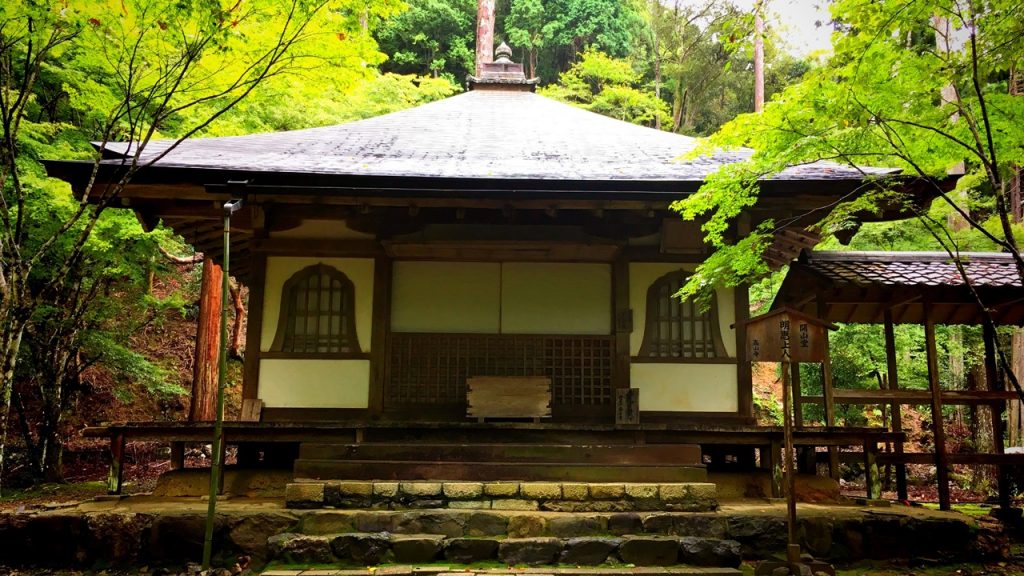
The image of Myoe-shonin(明恵上人) who is the initiator of this temple is enshrined in this building.
(We cannot enter this building.)
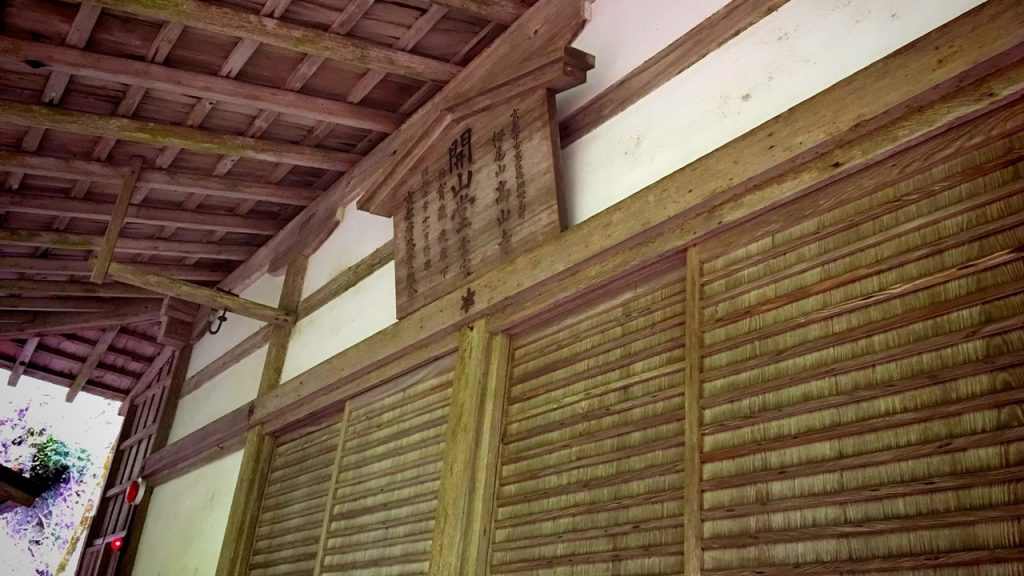
This is “Iko-an(遺香庵)” of the tea-ceremony room, but is usually not exhibited to the public.
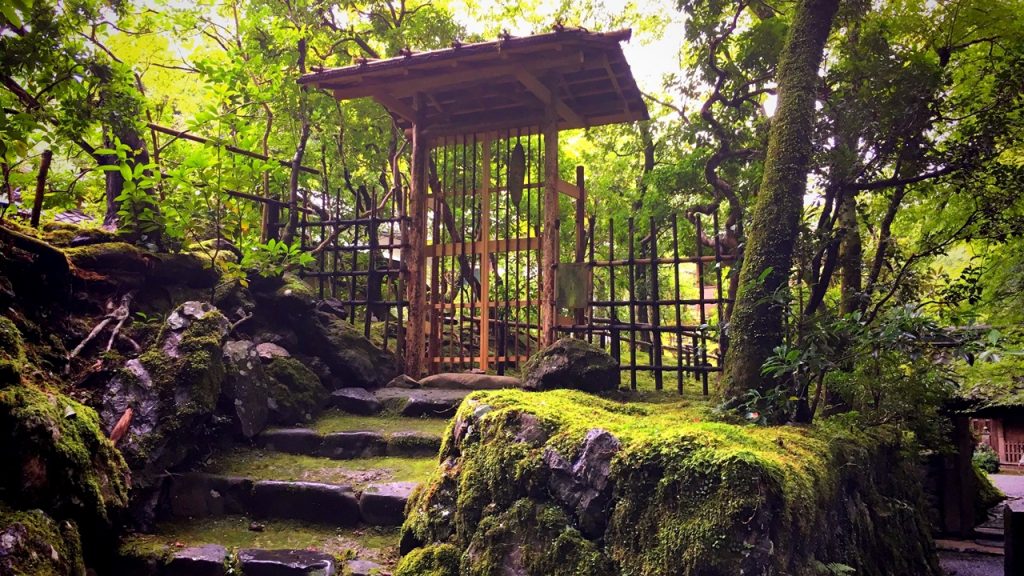
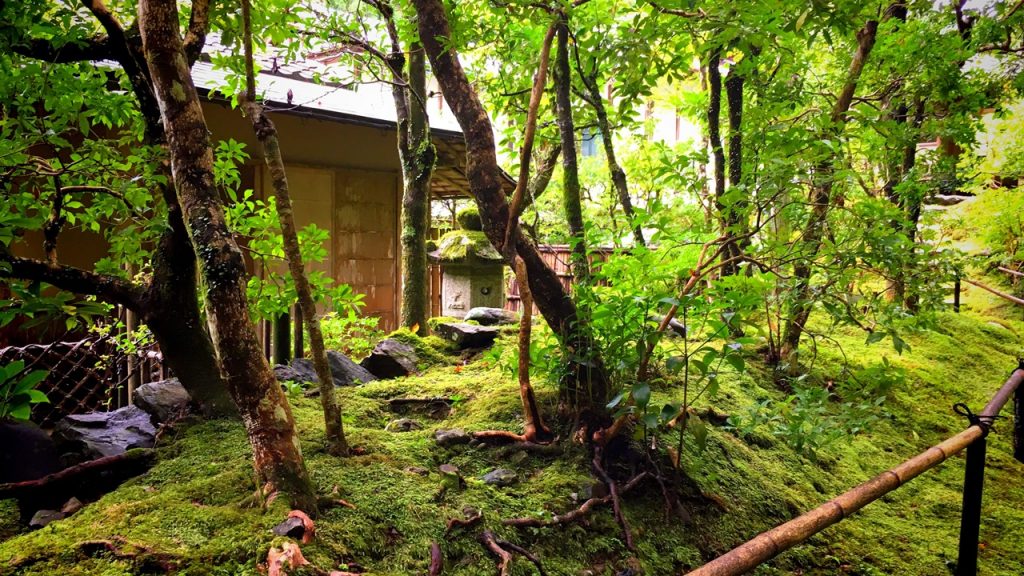
There is a bell tower in the depths of the tea-ceremony room.
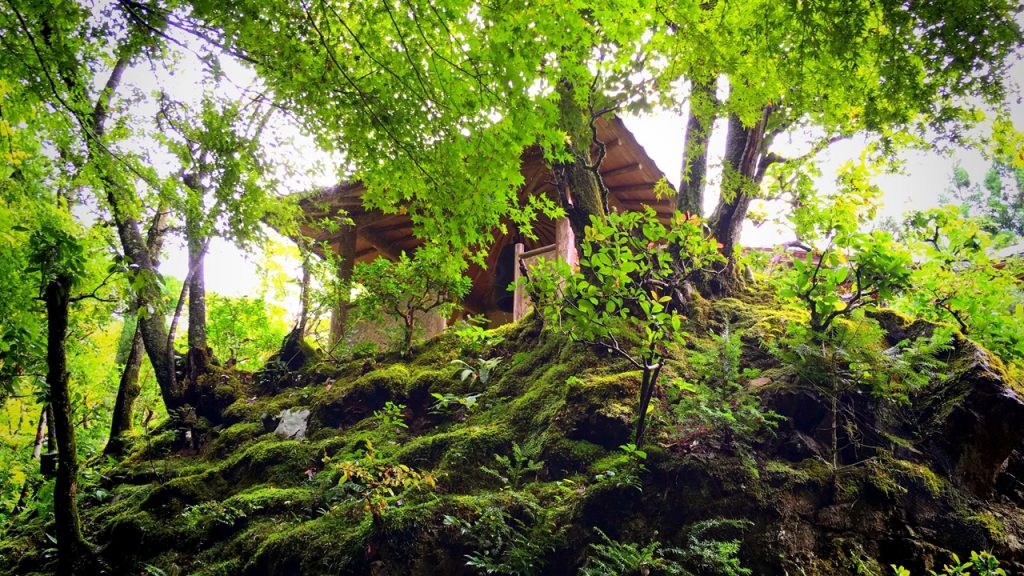
The oldest tea plantation in Japan is in Kosan-ji Temple.
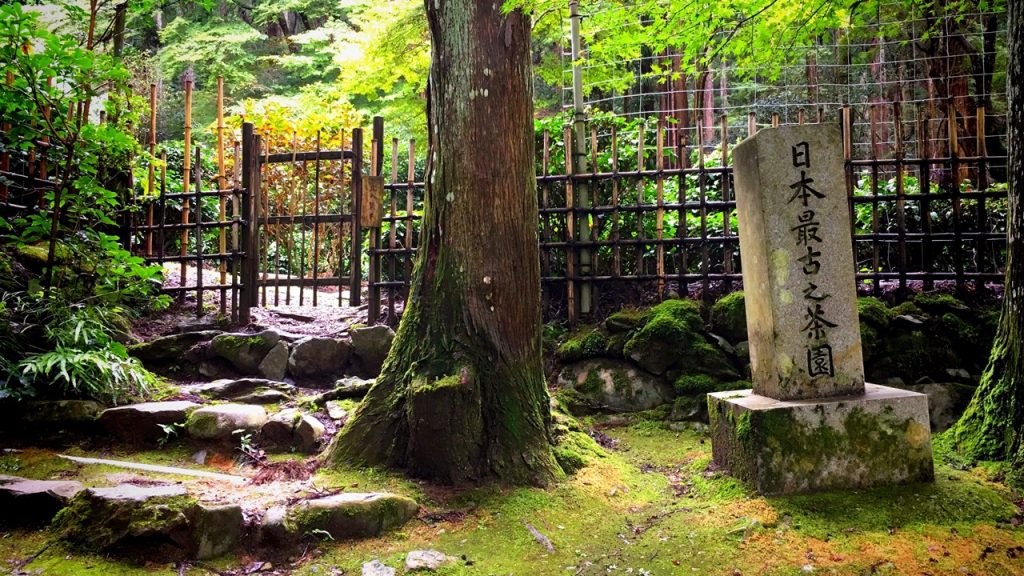
This tea plantation was opened early in the Kamakura era.
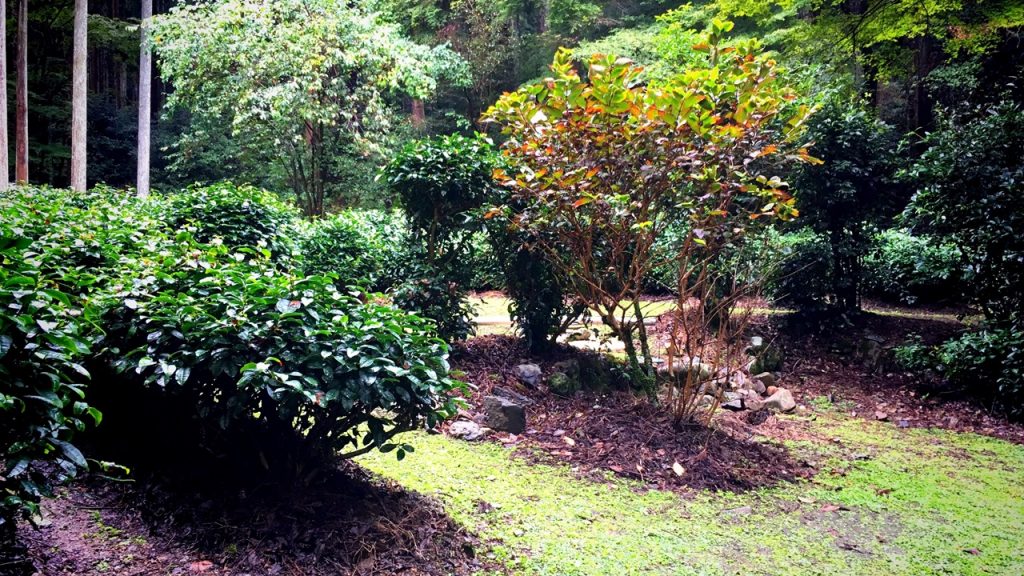
By the way, next topic is the “Choju Jinbutsu Giga(鳥獣人物戯画)”!!
4.The Sekisui-in (National Treasure) and the Choju Jinbutsu Giga (pay area)
Youtube:京都の世界遺産:高山寺(Kosan-ji Temple : World Heritage Site : ‘Historic Monuments of Ancient Kyoto’)
This is the entrance gate of the “Sekisui-In(石水院)”.

The “Sekisui-In(石水院)” is also called the “Gosho-do(五所堂)”.
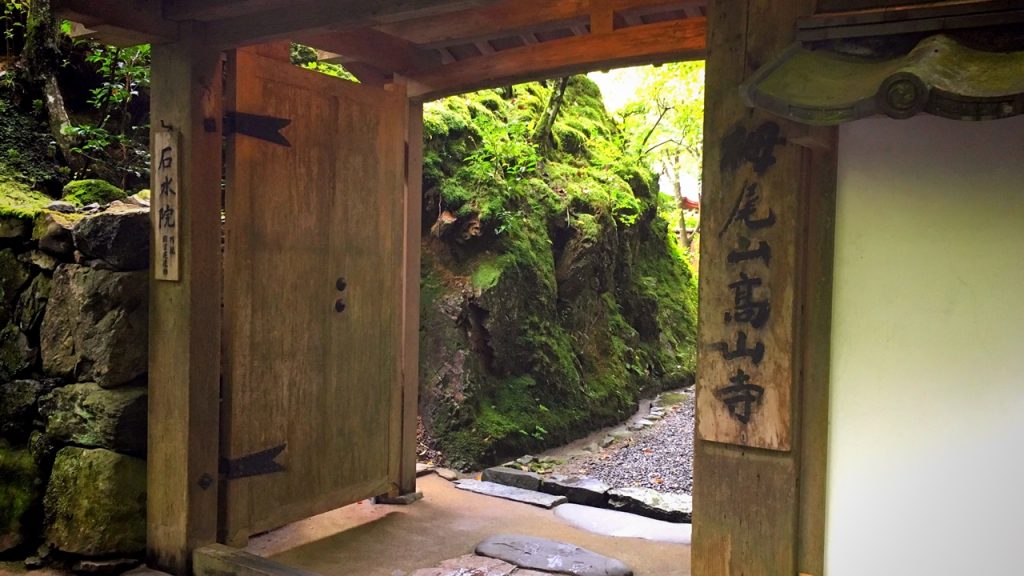
This building was built in the north side of this temple in old days.
However, it was removed and rebuilt in the current place in 1889.

This is the “reception hall(客殿)” which is an entrance of “Sekisui-In(石水院)”.

The admission fee is 800 yen (adults).
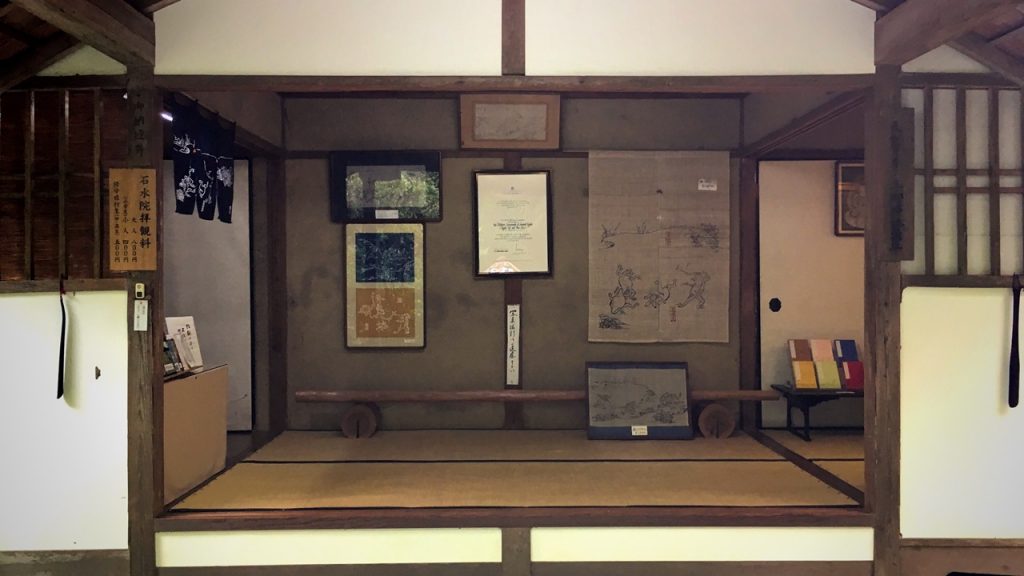
This is the connecting-corridor to connect reception hall and “Sekisui-In(石水院)”.

There are a small garden and a pond between reception hall and “Sekisui-In(石水院)”.
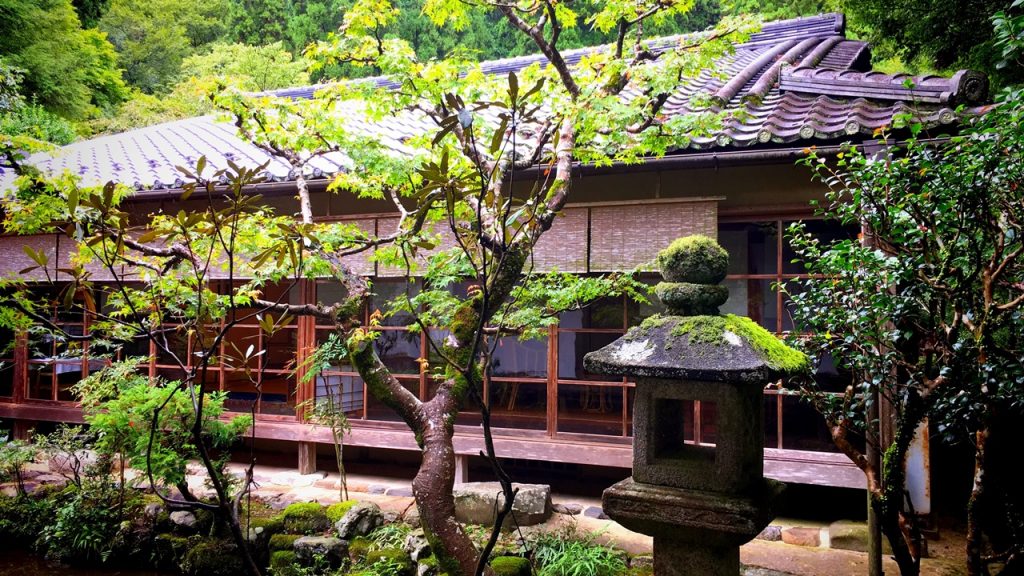
The “Sekisui-In(石水院)” is designated as a national treasure.
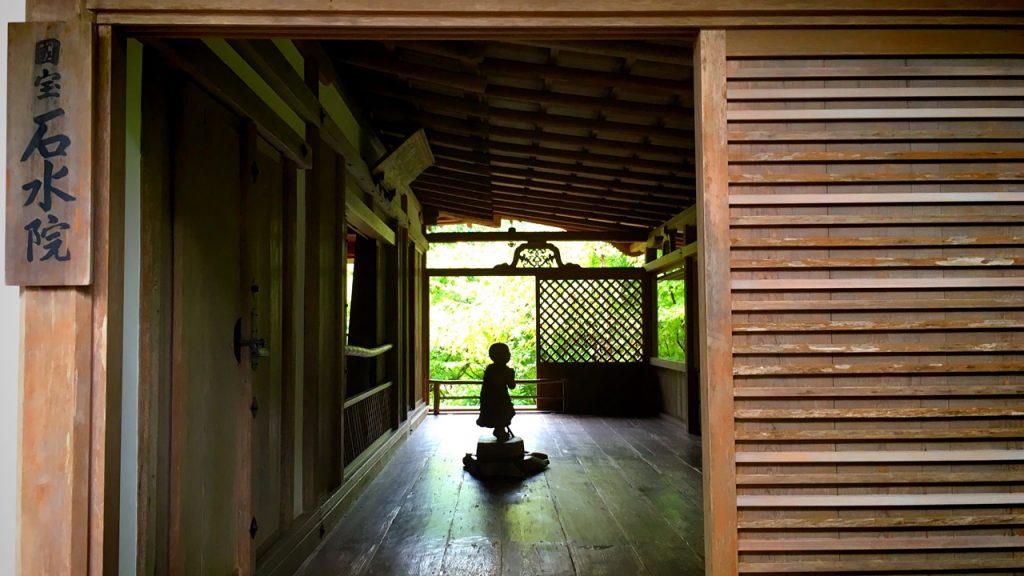
The statue of “Zenzai-Doji(善財童子)” is put in the corridor of the Sekisui-In called “Hisashi-no-ma(廂の間)”.
This is the famous photography spot. (○´艸`)
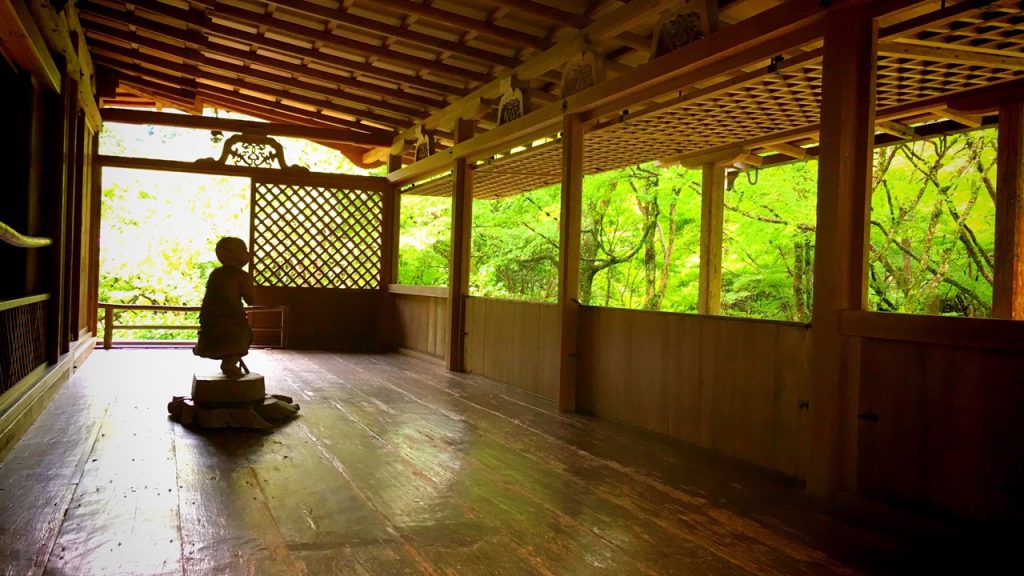
“Zenzai-Doji(善財童子)” is the Indian child who went for a trip of the enlightenment in old days.
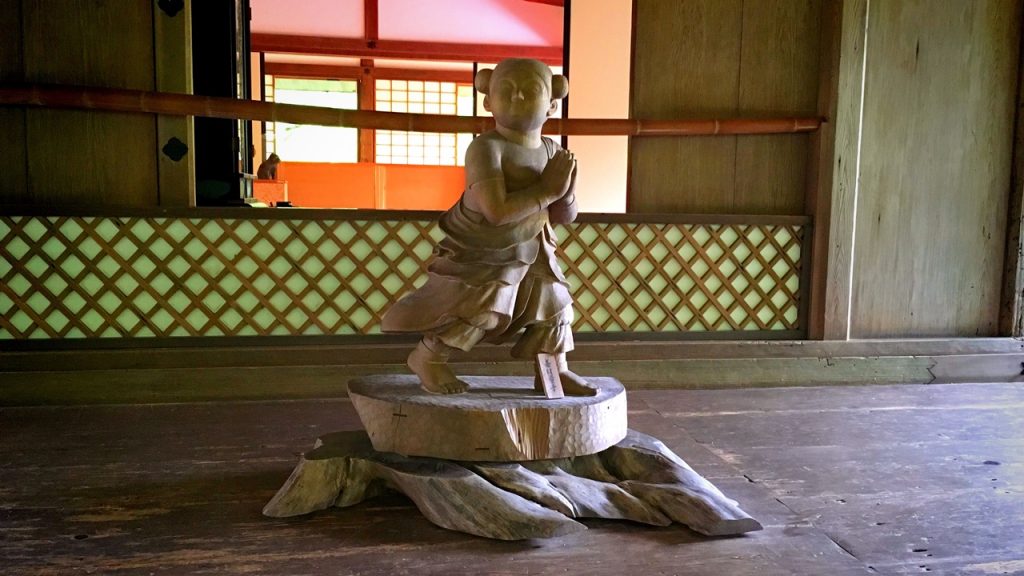
This building has a calm atmosphere.
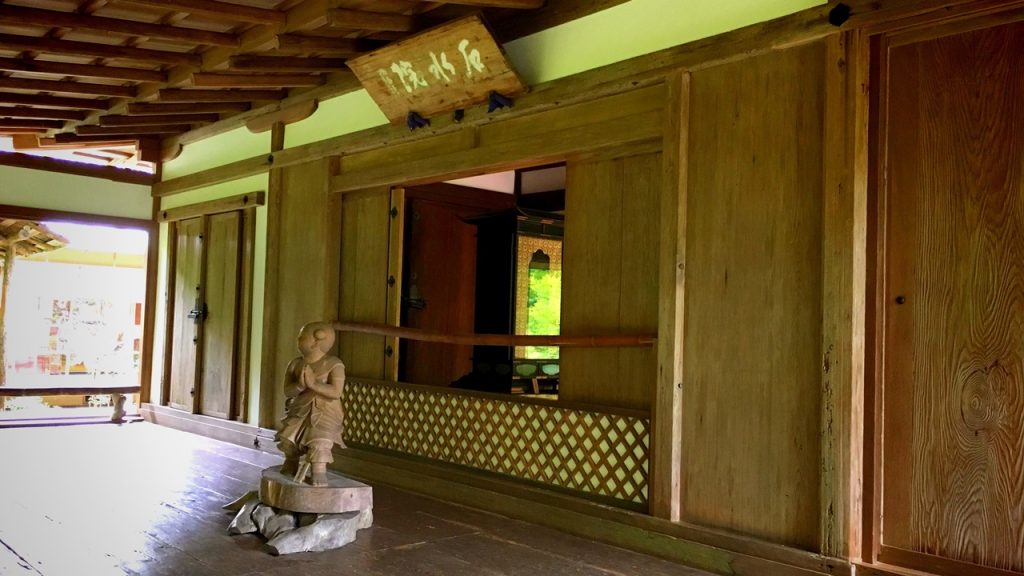
There is a crocketed decoration on the pillars of the building.
The decoration of this building is not luxurious, but is elaborated very delicately.

This is a veranda of the south side of the “Sekisui-In(石水院)”.
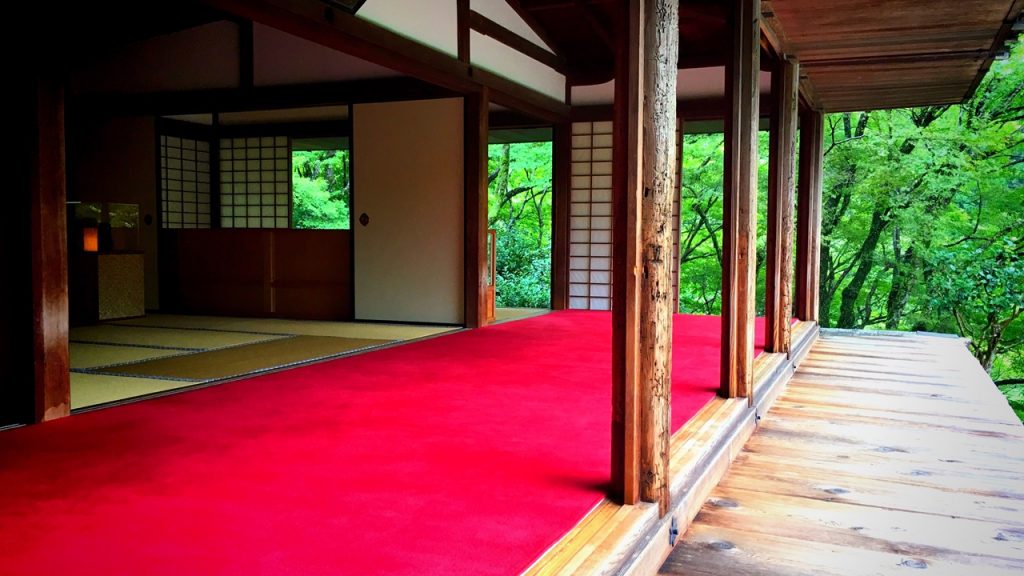
This veranda has a view of the Mt. Mukaiyama as its background.
Myoe-shonin(明恵上人) composed a famous tanka while looking at this scenery.
「あかあかや あかあかあかや あかあかや あかあかあかや あかあかや月」
If I translate this tanka into English…,
“bright so bright…
bright bright so bright…
bright so bright…
bright bright so bright…
bright so bright moonlight…”
The Kozan-ji Temple is a Chokugan-ji Temple (temple built at the order of the emperor) where the Imperial scroll of ‘日出光 照高山之寺’ was granted it as an Imperial gift from Retired Emperor Gotoba.
This is the imperial scroll.
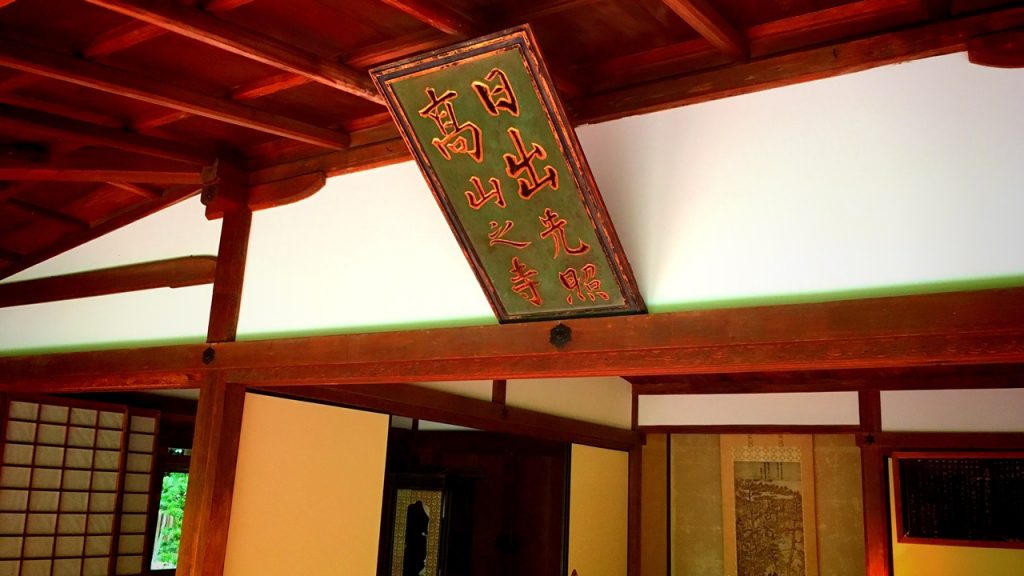
This is a wooden puppy which is said to be Unkei’s work… very cute puppy!!

This is a reproduction of the hanging scroll of the Myoe Shonin-zo (portrait of the monk Myoe). This is also known as ‘Jujo Zazen zo’ (Zen Meditation in a Tree).
The genuine articles of these are now possessed by Kyoto National Museum. And it is designated as a national treasure.
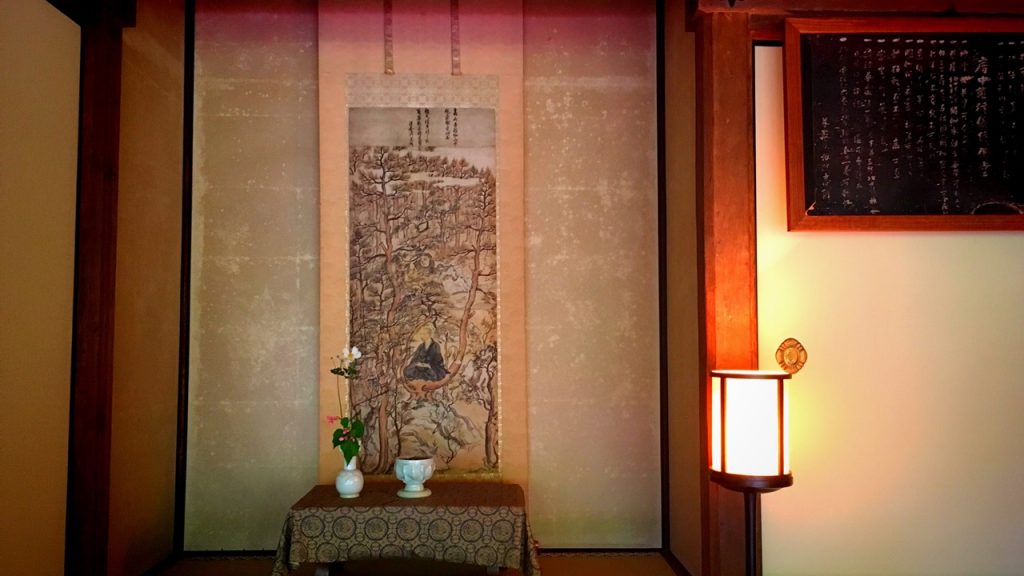
This is the color painting on silk Butsugen-Butsumo-zo (painting) which was created in the early Kamakura period at the end of the 12th century.
The genuine articles of these are also now possessed by Kyoto National Museum. And it is designated as a national treasure.
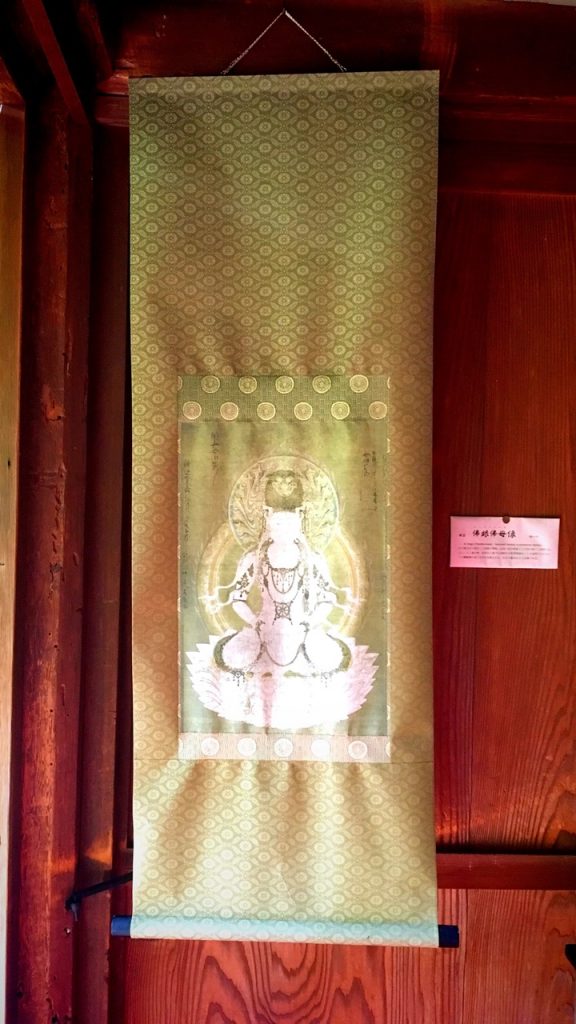
By the way, it is an introduction of the “Choju Jinbutsu Giga” from here.
The full set of the “Choju Jinbutsu Giga” is configured by four scrolls.
(By the way, these scrolls are a all copy. The genuine articles of these are now possessed by Tokyo National Museum and Kyoto National Museum.)
This is the vol.2 ~ vol.4 of “Choju Jinbutsu Giga”. (*This is a copy.)
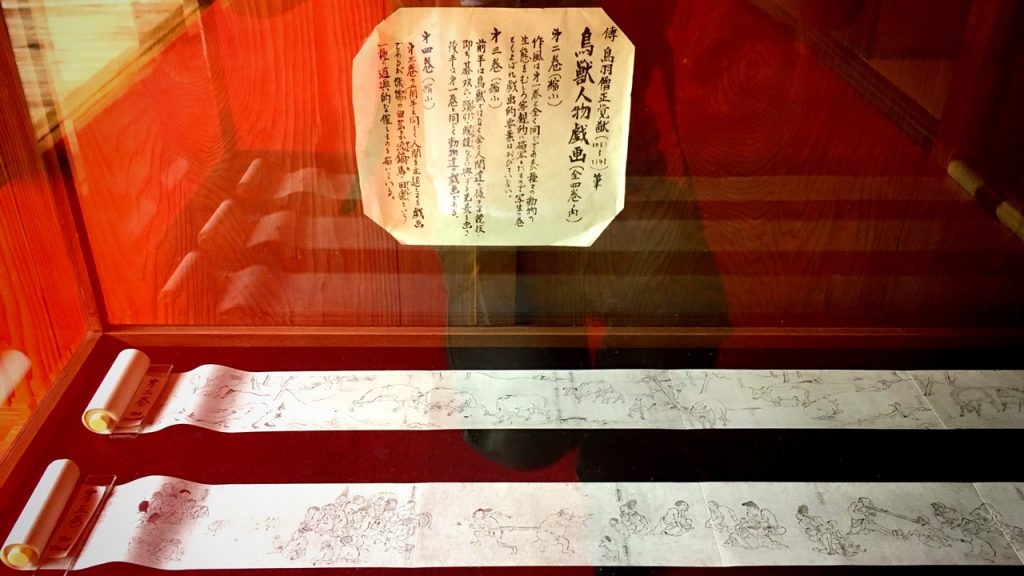
The habits of various animals and the game by various animals are described in this caricatures.
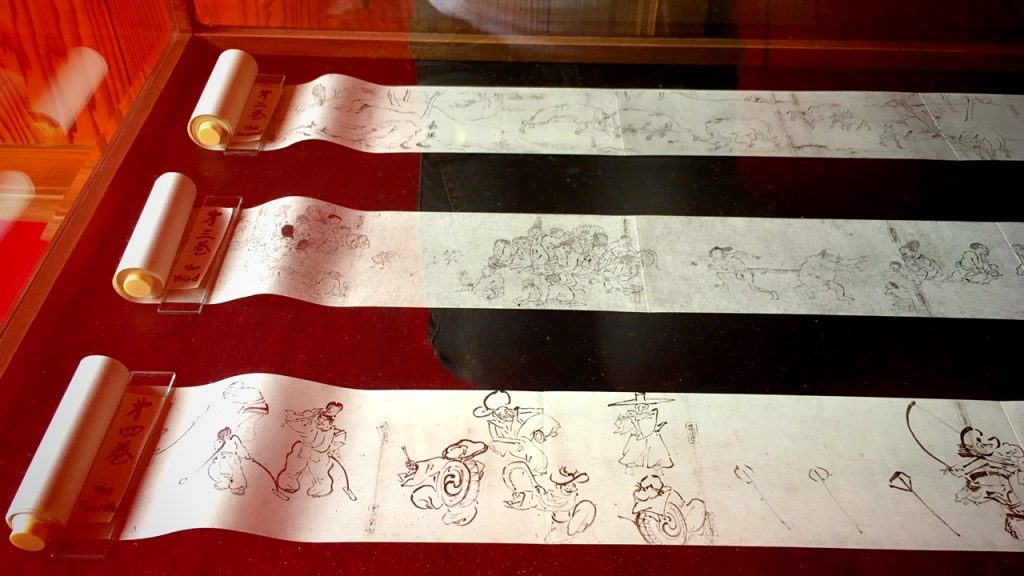
This is the vol.1 of “Choju Jinbutsu Giga”. (*This is a copy.)

A rabbit and a frog which to wrestle(sumo). (○´艸`)
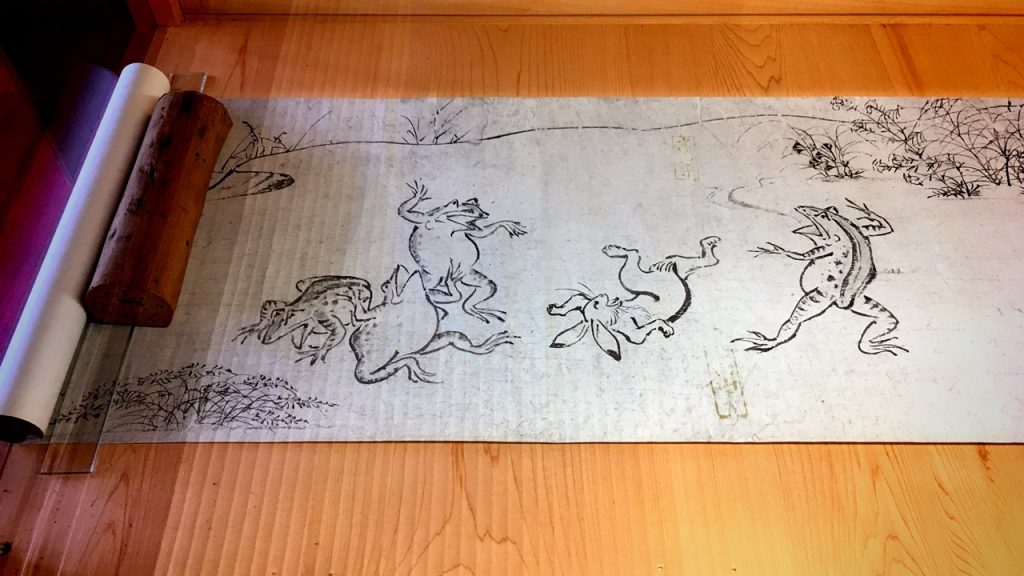
The Buddhist priest of a frog who is performing a ritual dance, and spectators.
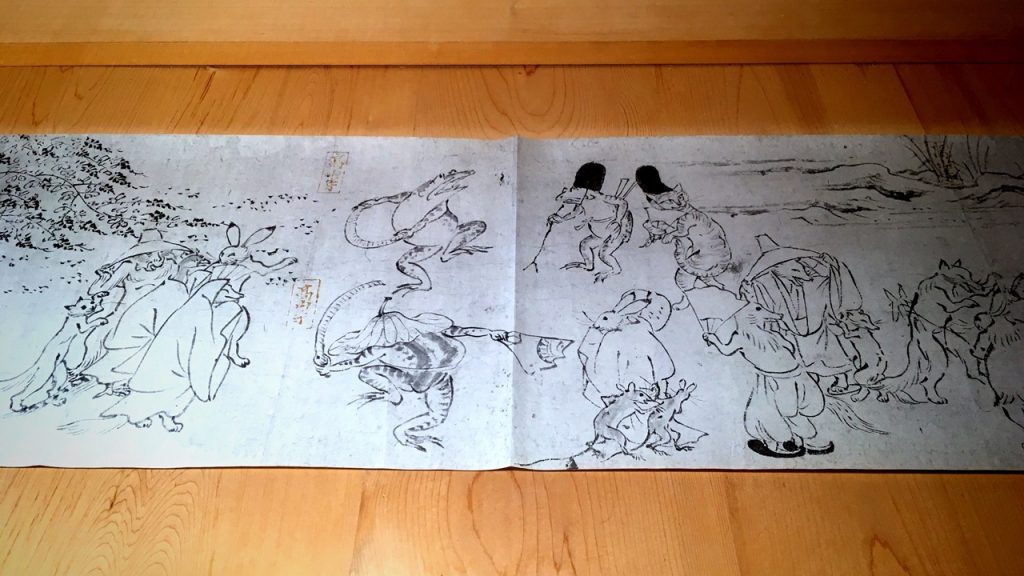
A rabbit and a frog which chase the criminal of the monkey.
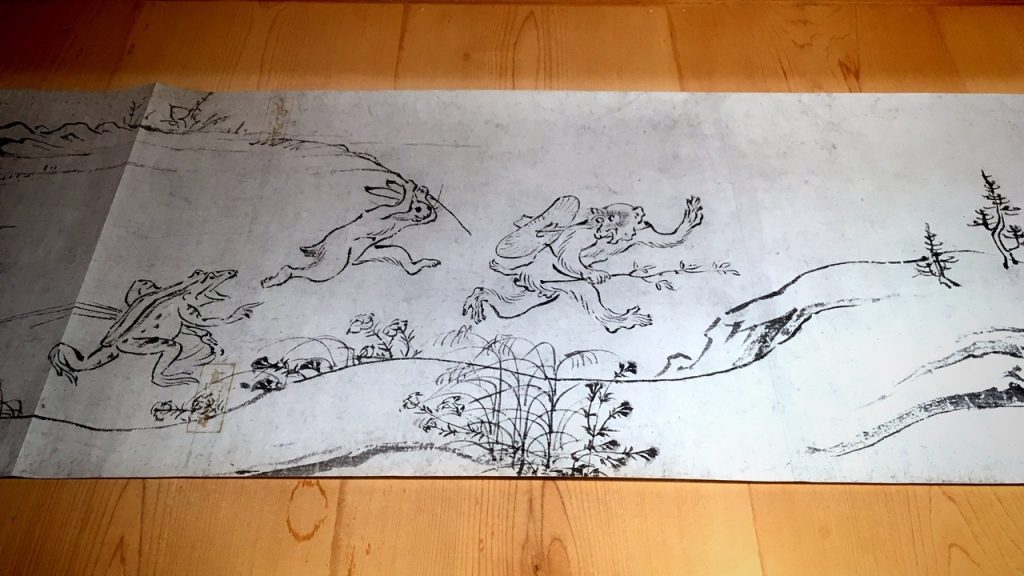
The rabbit which hands a present to the bishop of the monkey.

How do you like it?
I hardly think that it was drawn 800 years ago.
By the way, the goods of “Choju Jinbutsu Giga” are sold as a souvenir in the reception hall. d(*゚ー゚*)
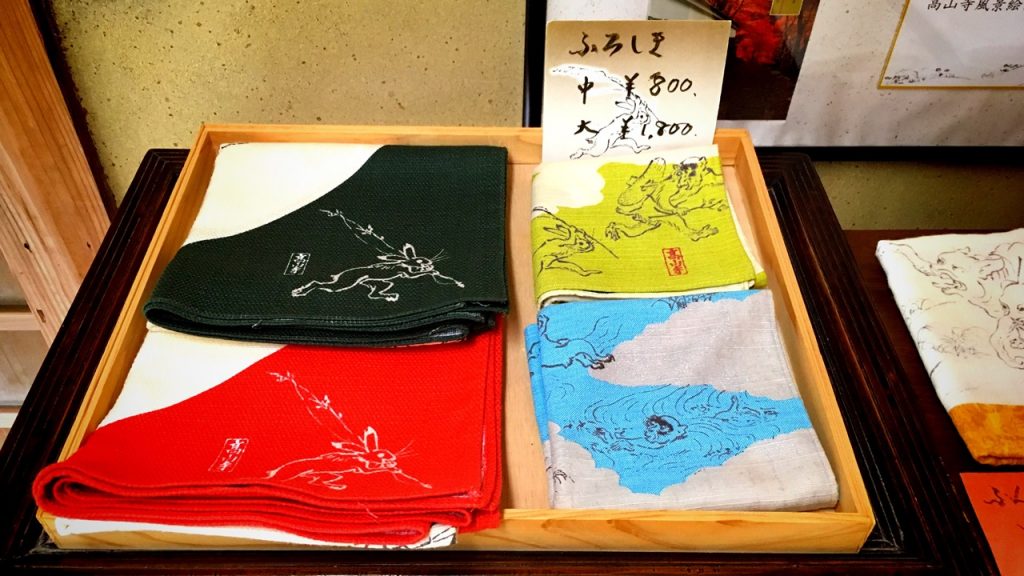
This souvenir is also sold on the Internet until November 20, 2016. (○´艸`)
5.Goshuin of Kosan-ji Temple
The word which can read as “釈迦如来(Shaka Nyorai)” is written to goshuin with a sumi. “釈迦如来(Shaka Nyorai)” is a principal idol of this temple.
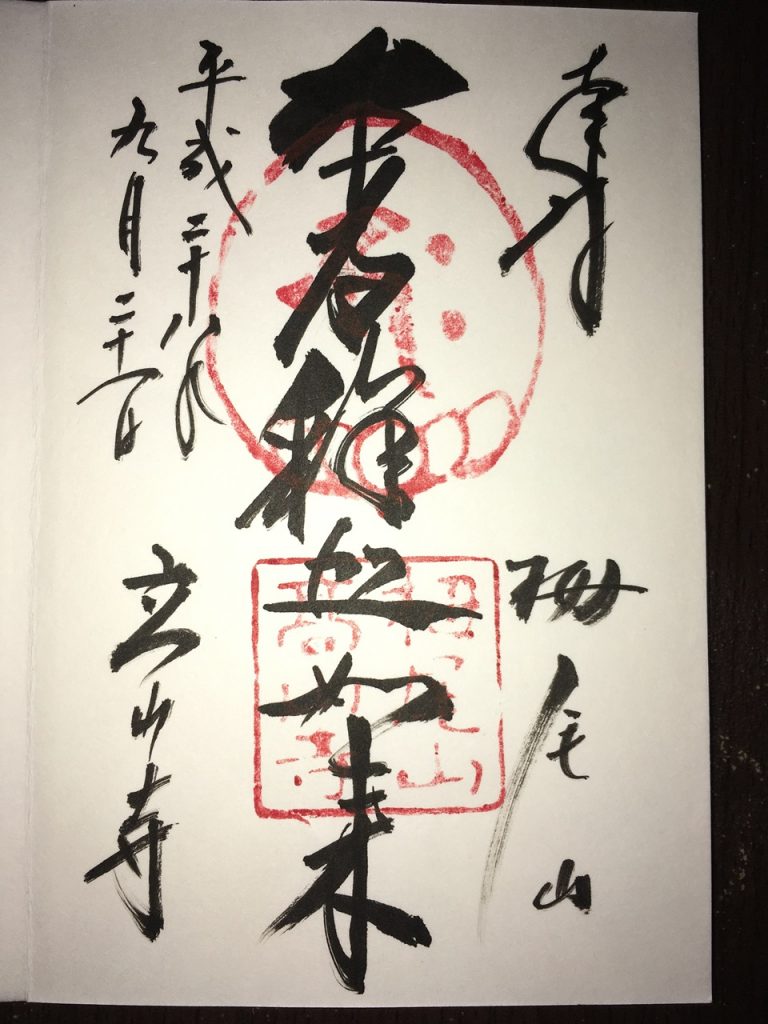
6.How to get to Kosan-ji Temple
●World Heritage ‘Historic Monuments of Ancient Kyoto’
There is no station of the train in the neighborhood of the Kosan-ji Temple.
Thus, we need to use the bus or the taxi to get to the Kosan-ji Temple.
The simplest way get on JR bus from “Kyoto Station”.
■Transfer guidance (train)
Timetable and Route Search(train)
■Transfer guidance (bus)
Timetable and Route Search(bus)
■Route Example (From Osaka Sta. to Kyoto Sta. by train)

■Route Example (From Namba Sta. to Kyoto Sta. by tain)
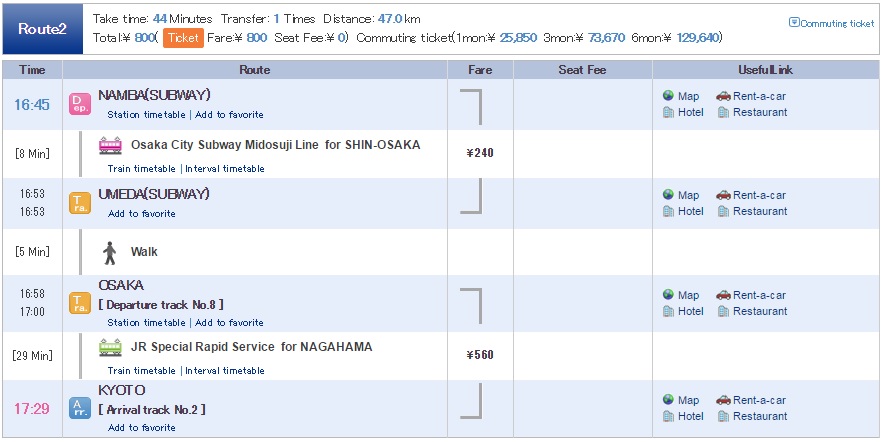
■Route Example (From Kyoto Sta. to Kosan-ji Temple by JR-Bus)

[Go]
Kyoto Station bus terminal, “Bus Stop:JR3”, JR-Bus “Takao Keihoku line” bound for Toganoo/Shuzan
From “Kyoto Station”→To “Toganoo bus stop” Fare:520 yen
[Return]
Toganoo bus stop, JR-Bus “Takao Keihoku line” bound for Kyoto Sta.
From “Toganoo bus stop”→To “Kyoto Station” Fare:520 yen
■”Toganoo bus stop”→Kosan-ji Temple
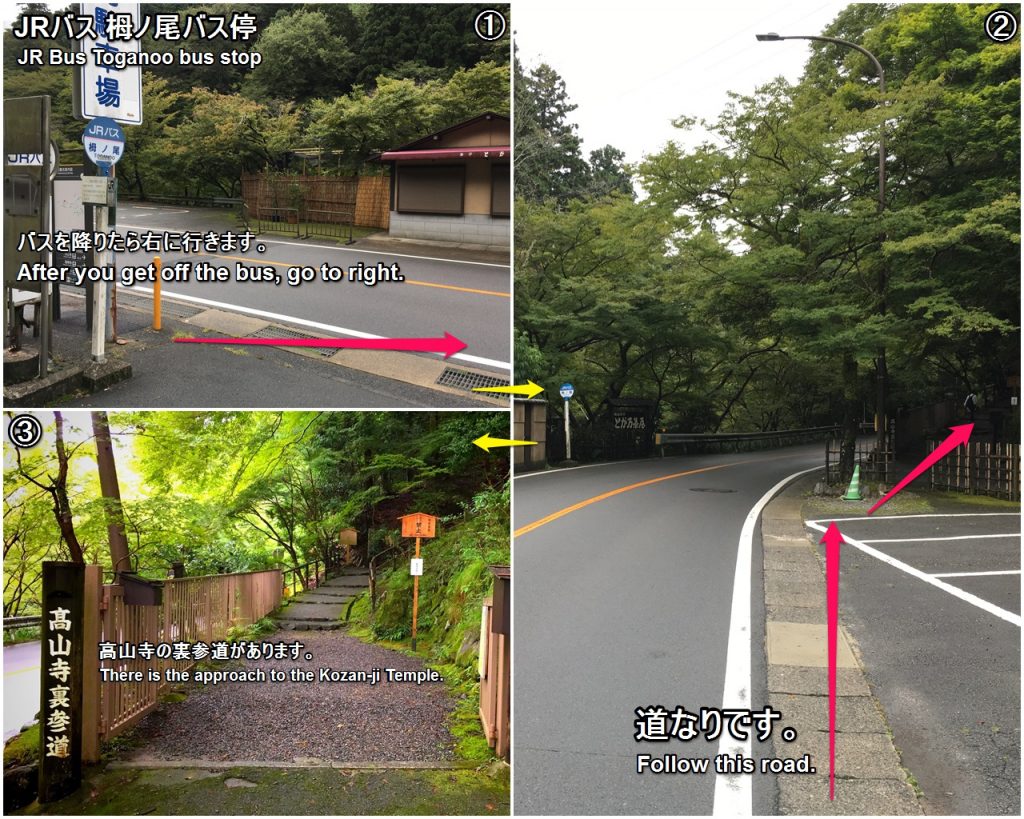
How did you like it?
Please try to go to this temple.
Have a nice trip! XD
<Let’s search the sightseeing information of Kansai in Japan on ‘Japan’s Travel Manual‘!!>
<This site introduces the easiest way to get Japanese (Kansai) sightseeing spots to you.>


